Eco-Friendly Eating
How to Lower Your Foodprint
Healing
Pennsylvania’s Ecosystems One Native Plant at a Time

Minimizing Toxic Exposure
Youth Campaigning for Climate
Justice

Eco-Friendly Eating
How to Lower Your Foodprint
Healing
Pennsylvania’s Ecosystems One Native Plant at a Time

Minimizing Toxic Exposure
Youth Campaigning for Climate
Justice
Farming for Soil Health

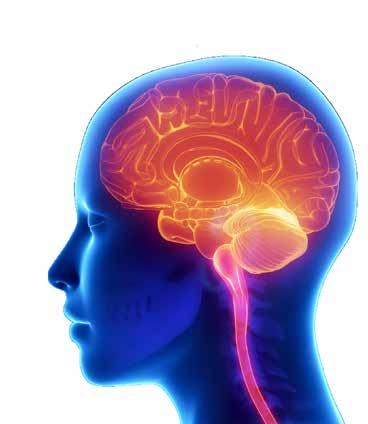












Natural Awakenings is a network of natural lifestyle magazine publishers empowering local communities with knowledge, resources and connections to lead healthier lives on a healthy planet.



To advertise with Natural Awakenings, visit our websites at NALancaster.com or NABerks.com, or contact us at Advertising@NALancaster.com or by phone at 717-3993187. Deadline for ads: the 5th of the month.

Submit through our website or email articles, news items and ideas to: Publisher@NALancaster.com. Deadline for editorial: the 1st of the month.
Submit events/classes through our website or email us at Publisher@NALancaster.com. Deadline: the 5th of the month. No phone calls or faxes, please.

Advertise your products or services in multiple markets!
Natural Awakenings Publishing Corp. is a growing franchised family of locally owned magazines serving communities since 1994. To place your ad in other markets call 239-434-9392. For franchising opportunities call 239-530-1377 or visit NaturalAwakenings.com


Our collective efforts at nurturing wellness for everyone are rippling out into the environments and communities we inhabit, adding a new dimension to the concepts of wholeness, vitality and longevity. Returning to nature’s embrace for healing, we swiftly learn how connected we are to her vast, yet intimate spaces and the importance to tread gently. These rhythms are vital, they resonate deeply within our cells … this planet is most certainly alive. Our co-evolution with natural cycles involves exchanging and learning from the wisdom of the whole. This idea that balance is effectively maintained by the self-regulation of intuitive feedback loops within and between the biosphere, the atmospheres and the oceans was introduced as the “Gaia hypothesis” by the 1970’s chemist James Lovelock to describe this beautiful example of sustainability and the ongoing cycles of birth, decay and rebirth that maintain a habitable planet.
We can relate to the pulse of the universe and the call of the wild; the heartbeat of our beloved Mother Earth echoes a visceral sense of who we are as human beings. The privilege and honor to view life holistically, a perspective many of us have felt the urge to cultivate, is better understood as the supportive and symbiotic relationship it can ultimately be.
Although our evolution as a species has been expansive in its mind-blowing technological innovation such as advancements in medicine and healing, the imbalance and tension between our ecology and our economy are taking a toll on ourselves and future generations as we continue to destroy precious land and forests to exhaust resources at a breakneck pace.
The current global forecast calls for an honest assessment and intentional shift to do better as consumers by stepping up as partners and stewards of our natural world. We stand at a crossroads, but fortunately, a dynamic surge of creativity has taken hold in the realms of clean, renewable energy sources and ongoing efforts to promote sustainable living.
Since 1970, April’s Earth Day has become a time to take a closer look at the perils and the projects at hand, confronting where we have overstepped boundaries and offering practical ways to live more simply, with less toxic outcomes. This issue offers a plethora of examples for conscious living that exemplify the compassion we have for ourselves and our world.
Each of us has our own gifts and interests, questions and collaborations that are already brewing. We trust that our shared visions can merge into the creativity, efficiency and harmony that will continue to renew ourselves and our world.
Namaste,
Co-Publishers/ Kendra Campbell
Executive Editors Jacqueline Mast
Editor Martin Miron
Contributing Writers Sheila Julson Lottie Sass


Design & Production Steffi K. Kern
Sales & Marketing Kendra Campbell Lori Johnson

Social Media/Website CC Innovations
Ten Branches Publishing P.O. Box 6274 ∙ Lancaster, PA 17607 Phone: 717-399-3187

Fax: 717-427-1441
Publisher@NALancaster.com
NALancaster.com • NABerks.com
Natural Awakenings Lancaster/Berks @NAwakenings @natural_lancasterberks
Give us a call or visit our website to sign up for our free digital edition or to subscribe for home delivery. $30/12 issues or $50/24 issues.
CEO Kimberly B. Whittle
National Editor Sandra Yeyati
Editor Brooke Goode
Copy Editor/Proofreader Melanie Rankin
Design & Production Gabrielle W-Perillo
National Advertising Lisa Doyle-Mitchell
Natural Awakenings Publishing Corporation
350 Main Street, Suite 9B Bedminster, NJ 07921
Ph: 239-206-2000
NaturalAwakenings@KnoWEwell.com
© 2023 by Natural Awakenings. All rights reserved. Although some parts of this publication may be reproduced and reprinted, we require that prior permission be obtained in writing.
NaturalAwakeningsis a free publication distributed locally and is supported by our advertisers. Please call to find a location near you or if you would like copies placed at your business.
We do not necessarily endorse the views expressed in the articles and advertisements, nor are we responsible for the products and services advertised. Check with a healthcare professional regarding the appropriate use of any treatment.
NaturalAwakeningsLancaster/Berks is a faithful steward of global resources and committed to being a part of an environmentally conscious community. We utilize a local printing company and an environmentally-friendly cold-set web printing process which emits virtually immeasurable VOCs into the environment. This product is 100% recyclable.

 by Marc Laucks
by Marc Laucks



Having observed sunflowers for years, I recognized that this one was a true standout. I see many metaphors in my photos; here I saw acceptance and gratitude. I first noticed this flower at dusk, but decided to wait until the next morning to capture it. As it turned out, I was disappointed because the flower had changed. I accepted that I missed the first opportunity and that the sunflower was now beautiful in a new way. I am still grateful for its gift of inspiration.
See more of Laucks’ photography and connect at MarcLaucksPhotography.com.


Relax into a luxurious one-hour massage followed by a 20-minute hyacinth foot scrub. Hyacinth is powerfully calming, relieves anxiety and stress, is anti-inflammatory and antibacterial, heals scars and nourishes the skin.
Let your stress slip away with enchanting fairy massage oil blends that calm the mind, detoxify the body and promote healing. Indulge the senses with a nourishing facial to increase cell renewal, leaving your skin soft and hydrated. Complete your magical experience with a complementary aromatherapy hot towel for your back.

AtThe Urban Well at Saint James, local practitioners will give insights into Indian spiritual traditions and practices with a panel discussion and Q&A led by Father David Peck, at 10 a.m., April 22, at Saint James Episcopal Church. Doors open at 9:30 a.m.

The four-hour experience includes presentations and performances of traditional Indian dance and music. The Sound of the Sitar, with John Protopapas, explores the healing forces of music as meditation and prayer, connecting vibration to spirit and experiencing chanting. Dance and Movement, with Rasmita Amin and dance students of Natyashala Dance Studio, will promote understanding of the connection between classical yoga poses and dance movements. Caring for Our Bodies, with Debra Dower, will focus on finding more light and energy in our bodies through mindful breath, chair yoga and anti-inflammatory spices and foods.
Participants may enjoy traditional Indian chai and foods throughout the experience, which will be provided by the presenters and Norbu restaurant.
Admission is $50; two for $80; students with ID $25. Location: 103 N. Duke St., Lancaster. For more information, call 717-3974858, email UrbanWell@SaintJamesLancaster.org or visit SaintJamesLancaster.org/namaste. See ads, pages 11 and 55.


Life coach Stephane Poncelet, owner of Create A Life Worth Living, changes the mindset of victim from surviving to thriving. He says, “As a child facing significant abuse in life, skills and strategies that are learned to keep people at a distance for survival, can be turned into ways to connect with others. My clients learn how to witness what is occurring in their life and use it to nurture their light and energy, rather than allow it to be diminishing.

“As a result of our [online] sessions, you will discover the two aspects of self—the inner parent and child—working together as you discover a new wholeness within. You will observe and respond to the conflict, emptiness and loneliness that stem from family dysfunction and mourn the unchangeable past. You will own your truth, grieve your losses and become accountable for how you live your life today. You will show yourself the love, patience and respect you deserve as you create a life worth living!”
Cost is $75 per session. For more information, call 570-449-2219 or email calwl2022@gmail.com. See ad, page 51.

Arts Studio is holding monthly integrative reiki clinics with discounted sessions by reiki practitioners and students of the studio. Owner Christina Rossi explains, “Our goal is to make reiki more accessible to all, while also promoting training and experience for our students going through our reiki trainings. In these times of rising costs of everything, I hope that people can take advantage of this offering as a way to bring more self-care into their month.”
Sessions are held in a clinic-type setting with multiple tables, clients and practitioners in a healing environment offering sessions that are level II or above. Sound healing, crystal therapy and aromatherapy may also be used during the sessions, depending on the practitioner’s specialties. Reserved time slots for the sessions are required and will be posted in the events listing on the website.
Cost is $25. Location: 546 Penn Ave., West Reading. For more information, call 610-451-9577, email HealingArts42@gmail.com or visit IntegrativeHealingArtsStudio.org. See ad, page 29.



Rodale Institute has created a digital version of the presentations made in October 2022, at the inaugural Regenerative Healthcare Conference for healthcare professionals and farmers on the benefits of soil health to human health with Dr. Mark Hyman, Dr. Michelle Perro and other leading experts.

The virtual conference is for anyone that has an interest in learning more about agriculture’s influence on human health, particularly those working or studying in the healthcare field. Attendees will learn about topics ranging from food as medicine to integrated farm-to-hospital models, nutrient density and the connection between regenerative organic farming and human health.
Presentations include Why Farming is Broken and How Regenerative Organic Agricultural Practices Are a Powerful Solution; The Soil and Health: A 21st Century View; Learnings from The Vegetable Systems Trial; Farming Systems Trial 40-Year Report; Navigating Unknown Terrain; From Plant Health to Human Health; Food, Trees, Human Health and Human Survival: The Protein Connection; Glyphosate and its Effect on Our Children's Health; and others.
Cost is $349. Visit Courses.RodaleInstitute.org/p/regenerative-health care-conference. For more information, call 610-683-1400 or email Regenerative.Health@RodaleInstitute.org. See ads, pages 24 and 52.
• Jaw clicking, jaw locking
• Jaw/neck/facial pain or headaches

• Ear pain, ringing in the ears, dizziness
• Restless sleep
• Loud snoring or periods of silence followed by gasps

• Mood changes (irritability, anxiety and depression)
• Trouble concentrating
• Unexplained weight gain
• Frequent heartburn and heavy night sweats




This May, join Natural Awakenings and KnoWEwell for a series of five women’ s wellness events entitled Overcoming Stress: How to Balance It All. Each Tuesday at 8 p.m., top integrative and functional medicine experts in women’s health will present cutting-edge insights into the many ways that stress can impact hormones, thyroid function, fertility and libido, and also provide tangible recommendations to improve skin care, aging, sleep and mindset. The speakers are:
n Anna Cabeca, board-certified obstetrician and gynecologist, author of The Hormone Fix
n Trevor Cates, naturopathic doctor, author of Clean Skin From Within
n Arti Chandra, double-board-certified physician specializing in integrative and functional medicine and public health

n Anne Marie Fine, naturopathic doctor, author of Cracking the Beauty Code


n Carrie Jones, functional medicine physician specializing in hormone and thyroid health


n Jaquel Patterson, naturopathic physician, success coach, author of Women and Lyme


n Carol A. Penn, board-certified physician, mindset coach, author of Meditation in a Time of Madness
n Jaclyn Smeaton, naturopathic doctor specializing in hormone health and reproductive medicine

n Kela Smith, holistic-integrative fertility and hormone doctor


n Jyl Steinbeck, personal trainer and lifestyle expert
The $59 event fee includes all Tuesday evening sessions. To learn more and register, visit Tinyurl.com/KWWstress or scan the QR Code. See ad, page 59.



Local cannabidiol (CBD) brand
Cedar Meadow Farm is adopting the name “Better”, for its CBD oil, following the tagline “Better soil, Better oil,” leveraging the 30-year-plus regenerative farming practices of co-founder Steve Groff. Partnering with local brand and creative agency Big Picture Studio, this new step makes a strong connection with customers that strive for “better” in their own lives.

Big Picture Studio owner Matt Steinruck says, “We wanted to reposition Cedar Meadow Farm not as a ‘CBD company’, but a lifestyle brand. We want to develop a relationship with people who have similar passions—not only about health and ecology, but about a journey towards something ‘better’ in their own lives. Connecting with that synergy is vital. This is the Cedar Meadow Farm’s biggest brand evolution so far, and we’re excited about the opportunity to interact with customers in new and refreshing ways.” The CBD oil is the same high-quality, single-farm-sourced product with a new look, along with Relief CBD lotion and salve.

For more information, email Hello@CedarMeadow.farm, call 717723-3770 or visit DiscoverBetter.com. See ads, pages 3 and 50.


annual pre-order season for wild Alaskan salmon is underway as Kwee-Jack Fish Company prepares for the summer harvest in Bristol Bay, Alaska. Hand-harvested and professionally processed wild Alaskan sockeye is available in full 20-pound shares or half 10-pound shares, ready for pick-up at local events in Florham Park, New Jersey, and Altoona, Chambersburg, Mechanicsburg, York and Lancaster, Pennsylvania, from September through November.
Additionally, smoked salmon shares will be available for purchase in the fall for pick-up in November. “We know finding high-quality seafood from a source you trust can be difficult, so as ethical fishermen, we are dedicated to offering our communities a boat-to-plate solution. We appreciate the chance to directly connect folks to nutritious, sustainably harvested fish from the wilds of Alaska!” enthuses Captain Joe Echo-Hawk.
The vivid red, sushi-grade salmon filets have bones removed and skin on one side, individually vacuum-packaged as whole filets or portioned servings, frozen at the peak of freshness. Annual bulk purchases for local pick-up offer the best price, and convenient year-round shipping to every state but Alaska and Hawaii is also available.
Share pricing varies, purchase by May 25. For more information, call 717-842-0180, email Hello@EatWildSalmon.com or visit EatWildSalmon.com. See ads, pages 38 and 55.
Kwee-Jack crewDeb Gallagher, RN, AP, an advanced practitioner of Eden Energy Medicine, has added foot reflexology to her menu of services and is scheduling appointments at her farmhouse in the scenic Lancaster countryside. She believes that Eden Energy Medicine works with energy systems within the body to support health and vitality, stating, “When we bring our energy systems back in balance, a natural healing occurs, bringing about a sense of well-being.”
Gallagher’s clients have reported improvements in their sleep, energy levels and symptoms associated with chronic illness, as well as relief from chronic pain and discomfort. She shares, “As an RN, I have seen many benefits of Western medicine with imaging, surgeries and some medications. For chronic conditions, there is so much that energy balancing can do. I've seen many clients who have been to a doctor only to be told nothing is wrong; that is when there could be an energy disturbance.”
Location: 2392 Horseshoe Rd., Lancaster. For more information, call 717-203-9666, email RestoreEnergy12@gmail.com or visit RestoreYourEnergy.org. See ad, page 53.
The boutique at Basset & Lab sells a selection of colorful and durable canine gear ranging from natural roped cotton, brass and leather collars and leads to flannel and madras collars and bowtie collars with matching leashes, plus no-pull harnesses from 2 Hounds Design and Canada Pooch, and a colorful array of adventure harnesses from Ruffwear.
In addition to a wide selection of house-made bakery treats and the highest-quality foods and supplements, Basset & Lab is stocked with playthings to stimulate the attention of dogs of all breeds and play styles, including stuffed toys, chew toys, enrichment toys, lick mats and flyers, as well as grooming tools, dog beds, food bowls and more.

“We take care in selecting the toys we stock,” says owner Alison Bowser. “Our toys are safe and non-toxic, and encourage pets to play and exercise.” Specialty food, treats and toys for cats are also available.
Location: 1352 Harrisburg Pike, Lancaster (next to Brimmers). For more information, call 717-288-1200, email Info@BassetAndLab.com or visit BassetAndLab.com. See ad, page 10.
The Lancaster County Climate Summit, from 9 a.m. to 5 p.m., April 22, comprises presentations and lectures on energy conservation, plant-based health, regenerative farming, native plants, clean energy and more at Fulton Bank, Ware Center, Tellus360, Holy Trinity Lutheran, St. James Episcopal, First Presbyterian and First Reformed UCC.
Organizations and businesses around Lancaster County will celebrate Earth Day by sharing their expertise and services in venues across Lancaster city, each with its own thematic focus on the challenge of climate change. The challenge is to know what can be done to ensure sustainability in all the areas of life that we depend upon, from the land that feeds us, the water we drink, the air we breathe and the homes where we live.
The Climate Summit is expected to bring more than 5,000 attendees through seven themed sites where they can listen to experts, learn about local green service providers and connect with existing action groups.
Admission is free. For more specific information, visit Regenall.org.


Sarah Preston, a consulting herbalist, energy worker and reiki master teacher, will teach a class from 10:30 a.m. to 4 p.m., April 23, at Radiance/ Herbs from the Labyrinth. She will review Reiki I; and students will learn the Reiki II power symbols, their names and uses; receive the attunement to the second degree of reiki; practice sending reiki through time and space; and will send reiki as a group to offer healing to an area of the planet.

Students will receive a Reiki II certificate at the completion of the class. Bring lunch, snacks and drinking water. Dress in layers and consider bringing slippers. Prerequisite: Reiki Level I attunement. Those attuned to Reiki I by other parties must bring their certificate.
Preston says, “Reiki is a simple, beautiful form of energy work that allows us to utilize the natural inclination of the universe toward healing. With reiki, you learn to open yourself as a conduit for the divine healing energy of the universe in whatever way you understand divinity.”
Cost is $200 with a $50 deposit and includes a copy of the book Reiki, the Healing Touch. Location: 13 W. Grant St., Lancaster. For more information, email HerbsFromTheLabyrinth@gmail.com, call 717-290-1517 or visit HerbsFromTheLabyrinth.com. See ads, pages 17 and 52.


he Inner Peace Holistic Expo will be held from 10 a.m. to 6 p.m., April 15, and 10 a.m. to 5 p.m., April 16, at the Hamburg Field House. The first 150 guests each day will receive swag bags. The event celebrates 10 years with more than 70 indoor and outdoor vendors offering an array of products and services, including crystals and gemstones, organic candles, CBD products and more.
Services available include massage, reiki, ionic foot detox, and aura photos. There will also be wellness items for home and body such as handcrafted soaps, lotions and jewelry. Founder Nancy Hartman says, “This show will include live blood analysis, mediums, lectures and more! The keynote speaker at 1p.m. on Saturday is Dr. Anthony De Canto, DC, DMH, from New Jersey, sharing his knowledge and protocol for wellness, ‘Four Steps to A Better Life Through The Big Four Process.’ Be sure not to miss him when scheduling your day with us!”

Cost is $10/weekend. Admission for veterans and kids 12 and under is free. Food is available for purchase. Location: Pine St., Hamburg. For more information, call 610-401-1342 or visit InnerPeaceHolisticExpo.com. See ad, page 23.

n Reiki is offering a Chakradance Kids (formerly Inamojo) wellbeing program for children at Bldg. 7 Yoga from 10 to 11 a.m. on the second and fourth Saturdays of the month through June. It weaves together storytelling, music, movement and art to assist children in gaining an awareness of self and others. Future classes will be held online, along with a Chakradance class for adults.

Owner Nancy Mintzer says, “The program has eight unique lessons. The themes are trusting instincts, managing emotions, self-confidence and self-esteem, compassion and kindness, speaking our truth, imagination and dreams, self-awareness, and the last class being a review of all the lessons learned and a dance party. It is the goal of Chakradance Kids to provide children with an awareness of self and life skills to help them navigate daily life.”
Cost is $15 per session. Location: 220 North Park Rd., Bldg. 7, Wyomissing. For more information, call 610-463-8701, email Peace.N.Reiki@gmail.com or visit PeaceNReiki.com. See ad, page 11 and 53.
The Berks Earth Day 2023 event will take place from noon to 6 p.m., April 22, at Reading City Park on the 53rd anniversary of the inaugural 1970 event. This year’s theme is “Past, Present and Future.” It also celebrates the city of Reading’s 275th anniversary.

Visitors will enjoy eco-friendly exhibits and vendors, speakers, live music, animals, kids activities, Native American song and dance, and food. Berks Earth Day Committee co-chair Bill Litvin says, “Looking towards the future, we need to do those things today that will make the world a better place for our children and grandchildren. East Penn/Deka Batteries will be collecting car batteries. We will be accepting non-perishable food donations for Helping Harvest Food Bank and we will be giving seedlings in exchange for food donation.”
Earth Day sponsors include the city of Reading, Reading Public Works Department, UGI Utilities (Platinum); Kimber-
ton Whole Foods (Gold); East Penn Manufacturing (Deka), Enersys, Natural Awakenings magazine, Visions Federal Credit Union (Silver); and JP Mascaro & Sons, SanCo Sound (Bronze). Bands performing include Mark James, Kim & Paul, of Vuja De, Livin’ in the Rhythm Drum Circle, John King Dance Band and Golden Twine String Band. Earth Day will have a ceremonial tree planting in the Veterans’ Memorial Grove at 11:30 a.m.; speakers throughout the day from Better Path Coalition, Horn Farm, Reading Public Works and other groups; animal exhibits from Pennsylvania Bat Rescue at 1 p.m. and Red Creek Wildlife Center at 4 p.m.; and favorite mascots from local groups and teams.
Admission is free. Location: Reading City Park, 11th and Washington St. To volunteer or to be a vendor, exhibitor or sponsor, visit EarthDayBerks.org. For more information, email EarthDayBerks@ gmail.com. See ad, page 8.



The Hawk Mountain Sanctuary Summer Nature Camp series begins on June 19 and runs for eight weeks through the summer, providing a week of fun and learning on the mountain in the great outdoors. Themed day camps are designed for youth entering grades one through six to help kids create a deeper connection with the natural world through a variety of entertaining and educational activities.
Led by professional environmental education specialists, campers can meet live animals, conduct experiments, create art projects, learn from scientists and special presenters, explore natural areas and more. Weekly themes include Art of Nature, Wild Survivors, Predator & Prey, Surviving in the Wild, All About Animals, Wild Discoveries, Woodland Games and Young Naturalist.
All proceeds from the camp go toward the advancement of scientific research, training the best and brightest biologists, and stewarding the historic Hawk Mountain Sanctuary for generations to come. Help keep raptors soaring, local and globally.

Cost is $300/week, $250 for Mountain members. Location: 1700 Hawk Mountain Rd., Kempton. For more information, visit HawkMountain.org/summercamps or email Dawson@HawkMountain.org.


Write From the Heart will offer its yearly Teen Summer Writing Camp from 10:30 a.m. to 12:30 p.m. on July 24, 25 and 28 online via Zoom.

Professional writer and writing coach Melissa Greene says, “Classes are meant to reduce stress, bolster confidence and inspire young people to love writing, in school or out. They are relaxed, non-intimidating and free-spirited. There are no grades, tests or judgement, so we can be our best creative selves.”
Taught with compassion, warmth and humor, her workshops emphasize curiosity, playfulness and the art of being present and mindful to the world around us. “Since 2002, we have been a safe, welcoming retreat where young people can slow down, overcome perfectionism and self-doubt, and tune into the calm that writing without anxiety and restrictions brings to our lives,” shares Greene.

A new study published in Molecular Psychiatry has shown that eating more fermented foods and fiber daily for just four weeks significantly lowered perceived stress levels. Forty-five participants with relatively low-fiber diets were split into two groups.
One group met with a dietitian that recommended a psychobiotic diet, which included six to eight daily servings of fruits and vegetables high in prebiotic fibers, such as onions, leeks, cabbage, apples, bananas and oats; five to eight daily servings of grains; three to four servings of legumes per week; and two to three daily servings of fermented foods like sauerkraut, kefir and kombucha. The control group received only general dietary advice based on the healthy eating food pyramid.
The group following the psychobiotic diet reported feeling less stressed compared with those in the control group. Moreover, significant changes in the level of certain key chemicals produced by gut microbes were found in these participants. Some of these chemicals have been linked to improved mental health, which could explain why the participants reported feeling less stressed. The quality of sleep improved in both groups, but those on the psychobiotic diet reported greater sleep improvements.

After a systematic review of 39 studies to evaluate the benefits and harms of screening for anxiety disorders in children and adolescents aged 8 to 18, the U.S. Preventive Services Task Force (USPSTF), a group of disease prevention and medical experts assembled by the U.S. Department of Health and Human Services, now recommends that primary care physicians perform such screenings, even if there are no signs or symptoms of anxiety.
A common mental health condition in the U.S., anxiety disorder involves excessive fear or worry that manifests as emotional and physical symptoms. In children and adolescents, it is associated with impaired functioning, educational underachievement and an increased likelihood of a future anxiety disorder or depression. The 2018-2019 National Survey of Children’s Health found that 7.8 percent of children and adolescents aged 3 to 17 had a current anxiety disorder.
USPSTF recommended using screening questionnaires to identify children at risk, noting that studies show that children with anxiety benefit from treatments that may include cognitive behavioral therapy or psychotherapy. They also concluded that there is insufficient evidence to assess children 7 years old or younger.
Researchers in the UK compared the effect that different types of daily movement had on overall cognition, memory and executive function. Their study, published in the Journal of Epidemiology and Community Health, reported that replacing sitting, sleeping or gentle movement with less than 10 minutes of moderate to vigorous activity (brisk walking, bicycling, running up and down stairs, aerobic dancing, jogging, running or swimming) can protect the brain and improve working memory and executive processes like planning and organization. The intensity of the exercise matters, and study participants that engaged in light physical activity, rather than more vigorous activity, saw declines in cognitive performance. However, light activity is still more beneficial than sitting, the scientists found.
The data for these findings was taken from the 1970 British Cohort Study, an ongoing survey that tracks the health of a group of UK-born adults. The group of nearly 4,500 participants consented, at age 46, to wear an activity tracker and complete verbal memory and executive functioning tests, and they were followed from 2016 to 2018.


A Swedish battery manufacturer, Northvolt, in partnership with Stora Enso, one of the largest private forest owners in the world, has developed a battery for electric vehicles (EV) with an anode made of sustainably raised and harvested wood instead of graphite, paving the way for battery production from a renewable source.

The partners figured out a way to extract lignin, a carbon-rich natural binder that comprises up to 30 percent of many trees, and turn it into a material they call Lignode. According to Stora Enso, by replacing graphite or copper anodes with Lignode, lithium-ion batteries will offer faster charging and discharging, higher cycling stability and more efficient performance in low temperature.

More than 50 percent of the EV’s carbon footprint comes from the manufacture of its battery—both in sourcing raw materials and producing the component. Mining graphite is an expensive and labor-intensive process that requires considerable resources that come from parts of the world where workers’ rights are inadequately protected. While Northvolt’s battery is not on the market yet, this development, along with others like solid-state batteries, may help to reduce the carbon footprint of EVs.

Rapid ocean warming and other effects caused by climate change have stressed and degraded corals around the globe, and scientists have been studying ways to rebuild, manage and conserve these vital ecosystems. A new Australian study published in Journal of Applied Ecology tested whether playing certain sounds underwater at reef restoration sites could boost the recruitment of oysters and enhance their habitat-building activities. Australia’s flat oyster is a key reef-building organism targeted for restoration efforts. Previous studies had shown that the sound of healthy reefs differs from that of damaged reefs. Using inexpensive marine speakers, the researchers reproduced the sound of a healthy reef at four sites across two of the largest oyster reef restorations in Australia and compared the results to areas that did not receive this soundscape enrichment. The sonically enhanced areas resulted in the presence of more and larger oysters that formed more three-dimensional habitats atop the reef restorations. The scientists propose that the use of marine soundscapes during early stages of new reef restoration projects could reduce the cost of habitat recovery.

Jennifer Horrocks, the foster family recruiter for CHOR, finds families for kids referred to them by social workers and Child Protective Services in 26 Pennsylvania counties. Horrocks herself is currently a foster parent to five teenage boys. Since 2016, she and her husband Wayne have fostered 27 teenage boys and maintain contact with many of them.
CHOR operates both specialized and traditional foster care, plus adoption services. “We have a diverse program as far as the children we serve, which include kids that are harder to place due to age or behavioral issues,” says Horrocks. “Our staff is hands-on and collaborative. Our foster parents are part of a team.”
The nonprofit Children’s Home of Reading (CHOR) has deep roots in the community, first opened by a group of concerned citizens as a day nursery in 1884 to house just 12 children. Jill Troutman, vice president of advancement, marketing and communications, says, “We’re not just The Children’s Home of Reading, we’re everybody’s children’s home throughout Pennsylvania. There are between 17,000 and 20,000 kids each year that enter foster care.”
Today, CHOR supports 3,300 at-risk kids annually through more than 40 residential, educational, community and foster care programs throughout Berks and Lancaster counties, eastern Pennsylvania and as far away as Pittsburgh. Troutman affirms there is currently a great need for foster care’s safe, temporary living arrangements and support for children that have been removed from their families due to abuse, neglect, lack of safety or behavioral issues.

May is National Foster Care month, and CHOR has events planned to celebrate their families and engage the community, including a recruitment and “thank-you” retention and an outing to a “Fightins” baseball game on May 14.
Some people believe it’s hard to foster because the kids eventually leave, Horrocks observes. She notes, “I tell them from personal experience that they never really leave. When kids return to their families, they often realize the connections you’ve made with them and how you’ve impacted them.”
Horrocks shares that many of teens she has fostered lacked the direction and plans to attend college or trade school, or they may be confused by living with different families. Foster parents have the ability to influence kids in positive ways; one teen that her family fostered will graduate from Thaddeus Stevens College of Technology in May. “There are times fostering can be difficult, but when things like that happen, it makes those difficult times worth it,” she says.
Horrocks relates that many potential foster families are looking for younger children or babies, saying, “The majority of our referrals are for homes for adolescents and teens. I understand why people would want younger children, but there are so many positives to having older kiddos in your life. They keep you young because they keep you in the know about trends.”

Children can become interested in hobbies or activities enjoyed by foster parents that may also inspire and support teens to play sports or get involved in extracurricular activities they couldn’t do before due to lack of support or financial constraints of their biological family.

Horrocks has seen many success stories while fostering, but to her, the ultimate success is seeing children reunited with their birth families. “Ultimately, kids should be with their families if it’s possible and it’s safe. Success doesn’t always involve the kids living with foster families until they age out or get adopted. Success is seeing a kiddo that maybe had some behavioral issues correcting what he had to do or the parents working through their own obstacles, and they’re able to become a family again.”

The child’s biological parents are involved in the foster process as much as possible, Horrocks advises. “We build a whole team of people that love and support this kiddo. You can never have too many people that love and care about you.”
Troutman emphasizes that the organization is always in search of foster care parents throughout Pennsylvania, particularly for older adolescents. There are also options available for respite foster parents to relieve other foster parents when they need a break or for emergencies. Horrocks adds that respite parenting is good way to break into foster parenting and try different age groups.

The Children’s Home of Reading is located at 1010 Centre Ave., in Reading. For more information, call Jennifer Horrocks at 610655-5555 or visit BuildingKidsLives.org. See ads, pages 15 and 50.

There are many ways to be environmentally responsible when shopping for food. Here are a few tips.

Bring Reusable Shopping Bags
Americans use approximately 100 billion single-use plastic bags each year, which accumulate in landfills and waterways and never truly decompose. Some states have banned disposable bags, but many still permit them. Come prepared to the grocery store with reusable bags to reduce the use of single-use plastics.
Shop the Perimeter
Food packaging and containers make up 23 percent of landfill waste. Shop around the perimeter of the store as much as possible to find the freshest, healthiest foods with the least amount of packaging, such as produce, bulk items, dairy, fresh fish and meat. Bulk items like nuts, dry beans, coffee, tea and grains can be purchased in exactly the amount needed with no packaging.
Plan Ahead
The average American wastes about 21 percent of the food they buy, which equates to about $1,800 a year. To avoid overbuying and shrink the carbon footprint of multiple shopping trips, plan meals a week (or month) ahead and come with a shopping list organized by the sections or aisles of the store.
Shop Local and In Season
Local produce has a drastically smaller carbon footprint than fruits and vegetables that must travel long distanc-
es by truck, airplane or ship. Buying local, in-season produce reduces waste because the produce is fresher when purchased and will not spoil as quickly at home. If the family’s diet includes meats, choose pasture-raised, grass-fed products from farmers that practice regenerative organic agriculture, which improves the quality of the land and maintains local ecosystems.
Choose foods that were produced with the environment in mind by looking for the following labels, seals and certifications:
n USDA Organic
n Biodynamic (BDA) for food produced without chemical pesticides or herbicides, using organic, non-GMO seeds
n Non-GMO Project Verified for foods that were not genetically engineered
n FAIRTRADE Mark and Fair Trade Certified for food producers committed to reasonable wages and the safe, fair treatment of workers
n Climate Neutral Certified for food manufacturers committed to reducing their greenhouse gas emissions
n Safe Catch for sustainably caught fish
n Aquaculture Stewardship Council (ASC) and Best Aquaculture Practices (BAP) for sustainably farmed seafood
www.ZestChef.com



We all have to eat, and the food industry is big business, with wide-ranging implications across many arenas. Because agriculture is controlled by a handful of multinational corporations, the priority to maximize profits often conflicts with what is best for human and planetary health. In many ways, our food production and consumption practices are broken or on the brink of failure. They are inhumane, socially unjust, environmentally unsound and unsustainable. Viable, achievable solutions to these immense challenges exist, and the emerging consensus is that regenerative organic agriculture is the key to preserving human health and helping solve the
climate crisis. The COVID-19 pandemic uncovered weaknesses in the system, such as supply chain vulnerabilities, and altered human behavior as more people started cooking at home and exploring healthier lifestyle choices. The time is right to make positive changes to the way we grow, distribute and consume food.
For decades, doctors, scientists, farmers and nonprofits at the forefront of the environmental movement have been sounding the alarm about the inherent weaknesses in the national food chain
 Image courtesy of RodaInstitute.org
Image courtesy of RodaInstitute.org
and the harmful effects of industrial agriculture. In his book Food Fix: How to Save Our Health, Our Economy, Our Communities and Our Planet—One Bite at a Time, Dr. Mark Hyman notes, “Food is the nexus of most of our world’s health, economic, environmental, climate, social and even political crises. While this may seem like an exaggeration, it is not.”
In the late 1800s, American farming began to transition from small, diverse operations that produced a variety of crops and livestock to feed a family or community to an industrialized system dominated by multinational corporations that focused on maximizing yields of just a few crops, primarily corn, soy and wheat. Today, these crops overwhelmingly end up as animal feed, biofuels and cheap, processed food ingredients—a staple of the standard American diet since the 1950s.
Industrial agriculture is now the dominant food production system in this country, characterized by large-scale monoculture, heavy use of chemical fertilizers and pesticides, and meat produced in confined animal feeding operations (CAFO). Most modest family farms have been forced to either get into business with a big company (contract farming) or go out of business. The Natural Resources Defense Council reports that 90 percent of the 9 billion chickens raised each year in the U.S. are grown under contract, and 57 percent of hogs are owned and slaughtered by just four companies. According to Rodale Institute, only 8 percent of farms produce more than four crops, while specialty crops like fruits, vegetables and nuts are grown on just 3 percent of cropland.
With industrial dominance comes numerous devastating consequences.


According to the Union of Concerned Scientists, industrially produced food is bad for us on several fronts. Heavy pesticide use is poisoning our food, fertilizer is polluting our drinking water, junk food made of corn and soybeans is degrading our health and the overuse of antibiotics in CAFOs is accelerating the development of antibiotic-resistant bacteria. Bioethicist


80






Peter Singer advises, “Factory farms are breeding grounds for new viruses. We’ ve had swine flu and avian flu coming out of factory farms. It’s quite possible that the next pandemic will originate there.”
Zach Bush, a triple board-certified physician and producer of the documentary Farmer’s Footprint, says, “Over the last 25 years, we have seen the most profound explosion of chronic disease in human history. Research from around the globe now suggests that environmental factors are contributing to a combination of genetic, neurologic, autoimmune and metabolic injuries that underpin the collapse of health in our children and adults.”
The U.S. Centers for Disease Control and Prevention report that chronic and mental health conditions account for 90 percent of the nation’s $4.1 trillion in annual health care expenditures. Obesity affects 20 percent of children and 42 percent of adults. More than 850,000 Americans die of heart disease or stroke annually, and 37 million have diabetes. Each year, more than 1.7 million people are diagnosed with cancer, while 600,000 succumb to the disease.
“Most of those diseases are caused by our industrial diet, which means they are avoidable if we transform the food we grow, the food we produce and the food we eat. Eleven million people die every year from a bad diet,” Hyman asserts.
Led by the Regenerative Organic Alliance, which includes organizations and brands like Rodale Institute, Dr. Bronner’ s and Patagonia, the Regenerative Organic Certified (ROC) standard helps consumers make informed choices about their food purchases. Its three pillars—soil health, animal welfare and social fairness—are designed to ameliorate the problems associated with conventional agriculture.

Chemical-heavy farming practices employed by conventional agriculture deplete topsoil, draining it of all its organic matter—the very microbiome needed to nourish the plants we grow and ultimately nourish us. In 2014, Maria-Helena Semedo, of the United Nations Food and Agriculture Organization, said that if current farming practices continue, we have only 60 years of harvest left. The clock is ticking.
Farming techniques proposed by the ROC are designed to continually rebuild soil. They are proven by years of science done at Rodale Institute and practical results achieved by regenerative organic farmers already growing food this way. “On the farm that we operate here at the
Institute, we know that Native Americans were farming this land 8,000 to 10,000 years ago. We’d like to be farming this land 8,000 to 10,000 years from now. We probably won’t be using tractors or diesel fuel, but we will be using the soil,” says Rodale Institute CEO Jeff Moyer.
Under ROC standards that include a variety of rotating crops, cover crops, no tillage, no synthetic inputs of any kind, no genetically modified seeds and staggered grazing by animals, farms become biodiverse ecosystems with organically rich soil that absorbs water, doesn’t erode over time and produces safe, nutritious food. As J.I. Rodale said, “Healthy soil equals healthy food equals healthy people.”
Healthy soil draws carbon from the atmosphere deep into the ground, and that is a boost for our fight against climate change. “Regenerative organic farming has a very positive impact on climate, because we’re sequestering more carbon than we are emitting,” Moyer explains. “Under its current production model, agriculture is part of the problem. If it’s part of the problem, then it can and should be part of the solution. That’s the whole premise behind the [ROC] standard itself—treating agriculture as one of the primary tools that we’re going to use as a society to improve our relationship with the planet.”
Featuring Rodale Institute’s certified organic veggie, herb, and flower starts (expect your favorite heirlooms and many unique varieties) and a plethora of local vendors, food trucks with organic lunch options, and plenty of expert gardening advice from our growers!
SATURDAY, MAY 6 | 10am–4pm
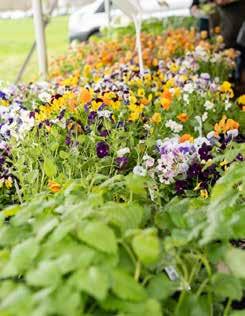



Under the ROC model, animals must be raised in a humane way that frees them from discomfort, fear, distress, hunger, pain, injury and disease, while also being able to express normal behavior. To achieve these aims, they need to be taken out of CAFOs and reintegrated into farmland, so that they are pasture-raised and grass-fed, creating meat that is more nutritious and less diseased without chemical interventions.
“We’re integrating animals onto the cropland, with livestock, chickens, sheep and hogs. Imagine what the Great Plains of the United States was 500 years ago. You had bison, elk, deer, rabbits, wolves and myriad different birds, because the birds always followed the migrating animals. We’re trying to mimic that to a small degree on our ranch,” says North Dakota farmer Gabe Brown, who started transitioning into regenerative organic practices in the mid-1990s and wrote an influential book on the subject, Dirt to Soil: One Family’s Journey into Regenerative Agriculture.

Taking care of the farmers and workers that plant, raise, harvest and transport our food is not just the right thing to do, it also creates a system that is more stable and resilient, says Graham Christensen, a Nebraska farmer and president of GC Resolve. “There are serious issues with how the big agricultural companies are treating workers. We saw horrible situations with COVID in the meatpacking plants and how the workers were being treated. This is just one of the many reasons that this over-centralized, monopolized system is affecting people in bad ways,” he says. “Regenerative organic farming requires more hands-on work, which creates jobs. Structural changes in the food production system to decentralize agriculture in favor of regional markets comprised of smaller farms would allow for more equity and better management of the ecosystem.”

 by Sheila Julson
by Sheila Julson
Avisit to a garden center or a nursery yields myriad choices in plants, bushes and trees. While it’s easy to be attracted to plants based on size, color and aesthetical appearance, choosing native plantings—trees and plants that have historically existed in a particular region, habitat or ecosystem without human intervention—provide food for insects, birds, bats and other wildlife. They are generally lower maintenance, help minimize flooding and filter pollutants from waterways.
Non-native plants and trees comprise exotic species from other parts of the world or those cultivated by humans that are not indigenous to a region. While they can add beauty to a yard, non-natives don’t have the same conservation benefits as native plants. Local naturalists, ecological landscapers and nurseries tell how and why they use plants and trees native to Pennsylvania.
Native plant expert Lydia Martin has transformed her nine-acre property, aptly named Hidden Valley, from a standard lawn surrounded by invasive species to a habitat teeming with native plants and wildlife. Native plants and trees she commonly uses include varieties of oak trees; pawpaw, an excellent groundcover that stabilizes the soil and produces edible fruit; milkweed varieties to support monarch butterflies; Jacob’s Ladder to attract bumblebees; and spring ephemerals.
“Native ephemerals are some of my favorite plants. Species like bloodroot, Virginiana bluebells, mayapple, Jack-in-the-pulpit and trilliums provide nectar and pollen to early emerging pollinators, especially bee species, gnats, flies and early butterflies,” says Martin. “The fruit of spring ephemerals like mayapple fruit and Jack-in-thepulpit berries develop later in the season to feed turtles, birds, and other wildlife.”
Martin also uses edible wild ramps, but cautions they can take years to mature. The tasty treats are also a hot commodity among chefs and popular with foragers. She says, “If foraged in the wild, be sure to harvest responsibly, and never over-harvest.”
Elyse Jurgen, of Waxwing EcoWorks Co., adds that grass-like sedges are reliable in a wide range of planting conditions. They function as a green mulch in the garden, creating a living layer that can be used in lieu of wood mulch. “They also offer a beautiful aesthetic texture along a trail, tucked under the shade of a tree, as a staple in a rain garden or simply planted in a porch pot. Sedges stack a lot of function in the garden, including being a host plant to the adorably photogenic skipper butterflies,” she advises.
Native plants and trees increase the biodiversity in any area they are present, emphasizes Tim Seifarth, of Earthbound Artisan landscaping. “Birds and insects will always find them. Also, native plants provide more effective nutrition. Nonnative plants typically take on the form of junk food for wildlife, as opposed to the healthier native options.”
Sherrie Moyer, of Hungry Hook Farm, affirms that native plants have myriad environmental advantages: they are adapted to survive in Pennsylvania’s climate and need no additional fertilizer or water once they
are established. “Also, native plants have evolved alongside native wildlife, which means they support and are supported by native animals, including insects and birds,” she says. “Native plants will never become invasive species, and they are historically accurate. Putting them back into our landscapes helps heal the ecosystems that humans have destroyed.”
While saving our entire ecosystem may seem daunting, Katrina Lefever, of the Mennonite Central Committee, notes that even one small yard that incorporates native plants has a significant impact. “Since many of our insect and plant relationships are specialists, the phrase ‘plant it and they will come’ is true if that insect population is still viable near the area. I had not experienced a blue-winged wasp before planting boneset or mountain mint. They’re beautiful to watch, mild and focused on their job.” Wildlife aren’t the only beings that benefit from native plants and trees. Jurgen points out that enlivening living spaces with native plants will provide the joy and anticipation of seasonal shifts. “Each season will welcome a new series of blooms that will entice a diversity of winged wildlife to observe,” she says. “Creating a biodiverse natural habitat pays back in dividends.”
While the aforementioned plants and trees are natural to Pennsylvania’s ecosystem, thought and planning is still required to transform property into a native habitat. “There are native plants that can take on an aggressive growth habit. That is something to keep in mind if you are trying to do a lot in a little space,” advises Seifarth. Serviceber-
ries, redbuds, witch hazels, geraniums, liatris (blazing star), butterfly weed and spicebush are good choices for smaller yards.
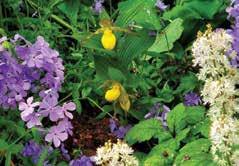
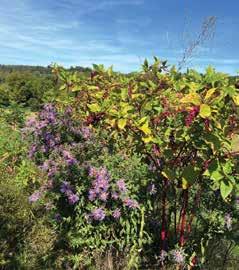
“The term ‘right plant, right place’ applies to native plants, too,” says Moyer. “Gardeners need to do their research or hire a knowledgeable designer just as they would with non-native plants. The biggest problem I see is that gardeners try to take a native species that is better suited to a large meadow and expect it to fit into a small yard.”
Moyer also recommends buying plants from nurseries or garden centers that don’t use pesticides and offer seed-grown plants, which are genetically diverse, rather than cultivars propagated through division and cloning. Gardeners should also leave native plant stalks and leaves alone over the winter, which provide critical habitat and food sources for birds and insects during colder months.
Martin recommends a garden refresh to review and identify existing landscape plants. If the ratio of plants indicates few native plant species, start by removing the least beneficial non-native plants, especially if they are an invasive species like Japanese barberry, burning bush or tree of heaven, and incorporate three to five native plants in an outdoor space.
“Perhaps add native asters, goldenrods, sunflowers, mints, violets and grasses like little bluestem in your outdoor space,” Martin recommends. “For shrubs, consider adding native hollies, moisture-loving buttonbush and summersweet, and viburnums that provide flowers, berries and attractive foliage through the season.”
The National Wildlife Federation Native Plant Finder (nwf.org/nativeplantfinder) lists native plants by ZIP Code.

“Ecological landscaping is about relationships,” affirms Lefever. “Ecological landscaping seeks a balance between the needs of both nature and humans in relationship.”
Martin says adding native plants and trees is a win-win for people and nature. When we choose to use a native tree or incorporate native plantings into outdoor spaces, we are collectively sustaining biodiversity locally and globally.
Seifarth sees native plants as a great first step in healing our environment. “But as the ecological health grows, it will take on different forms that as a community we should be ready for,” he says. “We plant to promote insects, birds and butterflies, but the next step is to be getting larger mammals in these spaces, too.
“The backyard needs to turn into a new marginal space that can support all wildlife. We as people need to rebuild that relationship so we don’t demonize larger animals like skunks, racoons and possums. We need to find ways to coexist to support the whole system.”
Hidden Valley Environmental Ecological Design Consulting, 717-475-3964. Hidden.Valley.Martins@gmail.com.
Waxwing EcoWorks Co., 717-676-1045, WaxwingEcoWorks.com. See ads, pages 23 and 54.
Earthbound Artisan, 717-507-6267, EarthboundArtisan.com.
Hungry Hook Farm, 717-216-0136, HungryHookFarm.com.
Mennonite Central Committee, Katrine Lefever, KatrinaLefever@MCC.org.
Sheila Julson is a contributor to Natural Awakenings magazines throughout the country. New England Aster and Pokeweed Photo courtesy of Earthbound Artisan Lady Slipper Photo: Katrina Lefever Spotted Bee Balm (Monarda Punctata)



 by Sandra Yeyati
by Sandra Yeyati
Jeff Moyer is CEO of Rodale Institute, which champions regenerative organic agriculture through scientific research, farmer-support programs and consumer education. On Earth Day, he plans to retire after dedicating 47 years to the influential nonprofit. Moyer revolutionized organic agriculture when he developed and popularized the roller crimper, a device that simplifies no-till crop management and reduces or eliminates the need for herbicides to control weeds. Under his leadership and as a member of the Regenerative Organic Alliance, Rodale Institute helped develop a Regenerative Organic Certified standard that expands USDA Certified Organic requirements to include soil health, animal welfare and social fairness pillars.
Because it boils down the measurement of farming success to one word: yield. By focusing just on yield and sacrificing long-term resource stability to get it, we’re chewing up topsoil at a national rate of five-and-a-half tons per acre of farmland per year for short-term economic benefit. You can only do that so long before you run out of topsoil. It doesn’t make sense long-term.

We’re suggesting a different production model, based on science, that incorporates other metrics of success: soil health and long-term planetary and human health. As a side bar, let’s say you’re a smoker and you stop smoking—your lungs will regenerate.

The same is true with soil. If we change production practices, the soil will regenerate.
Under our Regenerative Organic Certified standard, we want well-thought-out crop rotations to get more biodiversity into the system, cover crops and reduced tillage to get more earthworms, and a reintegration of livestock into farms. I’m not going to argue whether people should be eating animals, but if you are going to have animals in the system, they should be raised on farms with grass, not feed lots with grain.
Healthy soil is more biologically active and has a positive impact on climate because it doesn’t just sequester more carbon, it sequesters it at greater depths. We want carbon to last in the soil for a very long period of time. We don’t want it to be short-cycled in and out of the system, and we want to sequester it at greater depths where we can control it and maintain it for hundreds of years. Ideally, we’ll get it deeper and deeper in the soil over time.
Affordability is a strange term. Can we produce all the food we need at a reasonable cost? Absolutely. The problem with the conventional model is that we don’t pay the true cost of food production at the point of purchase. As an example, when we have to dredge the Mississippi River because of all the soil that’s washing into it from agricultural lands, you don’t pay that bill at the supermarket or restaurant. You pay it as a hidden cost, buried in our tax structure.
In an organic system, you’re paying the true cost of the production of that food at the point of purchase, which makes more sense. And if you add the cost of human health—diabetes, heart disease—all the things that our current food production and food consumption model embodies, then the system we have now is outra-
geously expensive, and regenerative organic food is cheaper than conventional food.


Yes. In most parts of the world, we use agricultural lands to produce all kinds of commodity products that aren’t food. Forty percent of the corn we produce in the U.S. goes to ethanol production and another 40 percent goes to livestock feed. The ink in your pen was made with soybean oil. If we decided to produce the most amount of food on an acre or hectare of land, we can produce way more food than we need.
What we’re saying is that conventional agriculture cannot feed the world longterm. In the short-term, we’re producing a lot of cheap food, but our current production model is doomed to failure over time because we’re going to run out of healthy soil to farm.
Very hopeful. The USDA says that most organic farms are more profitable and expanding at a more rapid rate than their conventional counterparts, and that’ s because we have a growing population of support in the marketplace. People are beginning to pay attention to how their food is produced, asking the right questions and recognizing that they have a vote with their food purchasing dollars. We’re seeing the concept of regenerative organic enter into the daily conversation, just like we did a few years ago with organic. People didn’t know what organic meant at first. Recent USDA statistics suggest that roughly 80 percent of the nation’s population has eaten something organic in the last 30 days, so people are seeking out organic, and we’re going to follow the same course with regenerative organic.

Mold can be found in plain sight, hiding in the least-expected places such as behind walls and baseboards, or underneath wallpaper. Darlene Eager, owner of DC Eager Emergency Services, advises people not to be fooled by quick fixes found online, because alleviating a mold issue involves much more than cleansing with detergent and water. “There’s no magical potion that just kills mold. You have to physically remove it,” says Eager. “If mold is on drywall, it eats through that drywall. That’s its food source, so it has to come out.”
Eager’s restoration team is certified through the Institute of Inspection, Cleaning and Restoration Certification as water damage and mold remediation specialists. There are food sources for mold everywhere, such as wood, paper, paint and adhesives, Eager explains, but if moisture is controlled, mold is also controlled. Moisture is the determining factor. Water can also seep in from outside into basements, creating high humidity or even causing flooding. Eager recommends running a dehumidifier in the basement during humid summer months to reduce the damp conditions that are favorable for mold growth.
Air quality testing is a great way to determine mold dangers within a home or business. While DC Eager Emergency Services removes the mold, a third party must be used for testing the air. It is not only against certification regulations for companies to test

their own work, but it is also the best way to keep everyone honest, Eager explains. The air quality test results help DC Eager know where the mold is and what has to be done, giving the entire picture so that all the mold can be removed properly. There are tens of thousands of different mold species, and some are more toxic than others, Eager notes. When reading air quality results, “You don’t only look at the amounts or levels of mold found in the air, you must also look at what species of molds are found. Stachybotrys, also known as ‘black mold’, should not be on an air test, and is an indicator that something has been wet or getting wet over and over for a long period of time.”
Because DC Eager Emergency Services offers demolition as an adjunct to mold removal, they have started doing the same for remodeling projects. Her crew takes pride in a clean demolition, where everything remains dust-free during the entire process. If mold is found during that time, Eager’s certified team can take care of it right away without needing contractors to call in a mold remediation service and interrupt the project.
Eager’s team has proven valuable to contractors by keeping their projects moving. While the contractor is remodeling one project, DC Eager is demolishing the next one and setting them up to do what they do best—rebuilding. “We educate before we estimate. We focus on quality, detail and customer service. This is what sets us apart from the rest,” reports Eager.
DC Eager Emergency Services, LLC, is located at 6 E. Kendig Rd., in Willow Street, Pennsylvania. For more information, call 717-989-5763 or visit DCEager.com. See ads, pages 9 and 53.
Thousands of scientific studies prove beyond a shadow of a doubt ...
Imagine a natural supplement that can help maintain a healthy immune system ... sharper memory ... clearer thinking ... zesty sex life – all at once.
It’s so good for you that its health benefits have been confirmed by thousands of medical studies.
It’s as essential to your brain and body as food, water and air.
What is it? Sleep. And if you’re not getting enough, this is for you.
Yes. Lack of sleep can affect your immune system. Research shows that people who don’t get enough quality sleep are more likely to get sick after being exposed to a virus, according to the Mayo Clinic.
Without sleep, the brain struggles to function – learning, memory and performance all suffer, according to Harvard research. But good sleep consolidates memory, while helping you learn and focus attention better, according to the National Institutes of Health.
About 1 in 4 of us living with a partner who is too tired for sex, according to the National Sleep Foundation. But you don’t need to be a scientist to know that bad sleep can weaken your sex drive and hurt your relationships.
It’s the only sleep system that provides a Cuddle Zone in the middle, so you can sleep soundly with a partner. It does this by raising or lowering head or feet sections. This helps provide deep, restorative sleep. Especially if you find it difficult to fall asleep and stay asleep all night.
Here are some of the benefits ...
Cuddle Zone systems help you enjoy a good night’s sleep (or cuddle time) with your partner. Your body’s immune system is supported. Your brain flushes out toxins. You wake refreshed and energized, feeling like the real you.
At Gardner’s Mattress & More, we’ve curated over 24 Cuddle Zone sleep systems for you to see in person, 7 days a week. Private appointments are available. People enjoy our shopping experience, in part because there’s no sales pressure ever. And we have over 200 verified stories of customer delight for your review. As a Natural Awakenings reader, you may bring the coupon below to Gardner’s Mattress & More and claim your Free Gifts before the April 30 deadline.
New relief for Lancaster-area residents who want to protect their immune system, increase mental focus and enjoy more cuddle time. The secret? Sleep Systems designed to help you sleep with a partner. But you won't really know until you see them and claim your Free Readers Gifts.
As a reader of Natural Awakenings, you are entitled to 4 FREE GIFTS. Simply bring this coupon to Gardner’s Mattress & More to receive:
• FREE Gift #1: Natural Latex Pillow ($60.00 value)
• FREE Gift #2: Free copy of our new book, Sleep Better! ($9.95 value)
• FREE Gift #3: $200 Savings Voucher on any Cuddle Zone Sleep System

• FREE Gift #4: Soothing Lavender Salve to help you sleep tonight ($20.00 value)
Bring this coupon to the store at 830 Plaza Blvd. in Lancaster (behind Park City Mall, next to Van Scoy Jewelers). There’s no obligation to buy anything, just visit to explore your options! Your Readers Gifts expire April 30, 2023.
Gardner’s Mattress & More 830 Plaza Blvd., Lancaster, PA 17601 www.GardnersFreeGifts.com
717-299-6228

In any fitness regimen, rest and muscle recovery are just as important as strength training or cardio workouts. Allowing our body to heal micro-tears and inflammation after strenuous exercise readies muscles for subsequent training sessions. By strategically planning a muscle recovery regimen, we optimize performance and reduce injury risk.

Key factors that affect recovery time include workout intensity and duration, stress, sleep and nutrition. Workouts that are longer in duration or higher in intensity require a greater amount of recovery time. High stress levels can increase cortisol and adrenaline, and consistently excessive levels of these fight-or-flight hormones have been shown to impact the body’s ability to repair.
If we are chronically deprived of proper sleep (at least seven hours every night) our muscles will suffer. And a poor diet is akin to using broken tools to fix something.
Following a healthy, well-balanced and protein-focused eating plan can significantly improve muscle recovery time.
Here are a few scientifically proven approaches that promote tissue repair. A solid, muscle-recovery plan should include one or more of these techniques.
Earthing is the practice of connecting with the Earth’s surface energy by going barefoot outside. Also known as grounding or barefoot healing, recent studies suggest that this practice can promote muscle recovery. One study that divided 32 healthy young men into either a grounded or sham-grounded group found that the grounded participants had significantly greater concentrations of neutrophils and platelets, which are essential for pro-inflammatory and anti-inflammatory responses.
In another study, researchers wanted
to observe the impacts of grounding on immunity, focusing specifically on delayed onset muscle soreness. Results suggested that being grounded considerably lessened pain levels and altered circulating neutrophils and lymphocytes, as well as various chemicals related to inflammation.
“The feeling of being grounded will calm your mind and center your body,” says Anthony Roumell, a personal trainer, gym owner, gymnast and long-time proponent of earthing. But there’s more to grounding than a clear head. He explains, “Our entire cellular system charges with free electrons when we connect to the earth. Studies suggest that these free electrons act as antioxidants in the organism, neutralizing the inflammation response.”
Jonathan Jordan, a certified personal trainer, nutrition coach and grounding practitioner, advises, “Simply getting off computers or devices and going outside
has immediate benefits. Just taking a break, being outside in nature with sun and fresh air lowers the fight-or-flight response. My clients who take the time and practice this for just a few minutes during the day all see great benefit to their health and in their workout programs.”
Another way to improve muscle recovery is by hydrating properly. Staying adequately hydrated before, during and after a workout helps the body flush out toxins, reduce inflammation and promote muscle repair. Hydration is more than just drinking water. We also need electrolytes such as sodium, calcium, magnesium and potassium, which can be found in natural sources like coconut water, fruits and vegetables. Electrolytes can also be found in sports drinks, but make sure to choose brands that do not contain sugar, preservatives or food coloring.
Having a balanced meal before and after a workout is important for muscle recovery. Eating the right foods can provide the essential nutrients needed to repair muscles. Healthy examples include protein like poultry, wild-caught fish, eggs and grass-fed protein powder; carbohydrates like sweet potatoes, quinoa, oats and dark leafy greens; and fats like avocados, nuts, seeds and mediumchain triglycerides, known in the market as MCT oil.

Massage increases the oxygen-rich blood flow in muscles and may decrease lactic acid buildup—a condition that causes soreness and puts a damper on proper exercise. Consider getting periodic massages from a well-trained professional. A good massage can encourage muscles to heal faster. Self-massage using a foam roller, trigger point balls or our own hands can also be helpful. To promote better blood flow, compression clothing designed to apply pressure to certain parts of the body may also be helpful.

Contrast therapies involve alternating between hot and cold, such as taking a hot shower followed by a cold one. A related muscle-recovery technique is whole-body cryotherapy, which involves exposure to extremely cold temperatures for a very short amount of time, usually one or two minutes.
“Learning how to embrace the discomfort within the cold and heat has had a profound change on my life,” Roumell says. “Contrast therapies will reconnect you to the power of your mind, your breath and your belief in your body’s magnificence. After all, when you are finished sitting in a 34-degree tub for two to 10 minutes, what could possibly be much harder in your day?”
David J. Sautter is a professional fitness writer for KnoWEwell and Natural Awakenings


 by Madiha M. Saeed, M.D.
by Madiha M. Saeed, M.D.
Toxins are in the water we drink, the food we eat and the air we breathe. The U.S. Environmental Protection Agency (EPA) Chemical Substances Control Inventory shows the magnitude of our potential exposure, listing more than 86,000 industrial chemicals that are manufactured or processed in this country. Despite regulations and safety protocols, a number of these dangerous compounds run off into waterways or are released into the atmosphere. Food manufacturers use some of them to preserve or beautify their products.
“We live in an increasingly toxic world, and the best defense against becoming overwhelmed by toxins is limiting what we take in as much as possible,” emphasizes Paul Anderson, an integrative and naturopathic clinician and co-author of Outside the Box Cancer Therapies. While our bodies are not designed to handle the accumulation of industrial chemicals, pesticides, pharmaceu-
ticals and radiation that seep into our personal space, we can take measures to reduce the assault and protect our health.
“For the health-conscious individual, toxins in the water is the top threat often overlooked or inadequately addressed,” says Rajka Milanovic Galbraith, an Illinois-based functional medicine practitioner, noting that drinking water is packed with chemicals like per- and polyfluorinated alkyl substances (also known as forever chemicals), solvents, pesticides, metals, bleach and radiological contaminants such as uranium and cesium. These substances can cause cancer, reproductive health concerns, and kidney and liver problems.
“I have treated hundreds of patients who have restored their health and are already eating and living clean by properly filtering their water, but sometimes, even when using a very expensive water filtration system, people will still find high levels of contaminants like MTBE [methyl tertiary-butyl ether], an additive in unleaded gasoline that is banned in several states,” Galbraith says. “Reverse osmosis typically filters most hazardous chemicals from your water, but they can be pricier. An inexpensive alternative are the filters from Clearly Filtered, which reportedly remove 99 percent of MTBE, among many other chemicals.”
“Everyone should try to filter their water with any means available, from a carbon block pitcher to the most aggressive method using a reverse osmosis water filter under their sink. Given the state of municipal—and well—water and the amount we need to clean our bodies and brains every day over a lifetime, we need to
get this right,” advises Aly Cohen, M.D., an integrative rheumatol ogist, founder of The Smart Human and co-author of Non-Toxic: Guide to Living Healthy in a Chemical World.






“For the individual newer on their health journey, I would say food additives are the ‘hidden’ environmental exposure that is a serious cause for concern, contributing to autoimmune diseases and from a metabolic standpoint, think weight gain, obesity, prediabetes and diabetes,” Galbraith says. “These additives are used to increase palatability, shelf life and texture and can include some you may have heard of, like sucralose, citrate and carrageenan, and others you may not have, like carboxymethylcellulose and polysorbate-80. Carrageenan is common in many nondairy milk alternatives that have made their way into coffee shops.”
According to Galbraith, the most effective way to steer clear of food additives is to avoid or greatly minimize the consumption of highly processed foods. She recommends eating whole foods, especially for those dealing with chronic health issues or experiencing signs or symptoms of an ailment. She also encourages people to read food labels and avoid products with artificial colors, carrageenan, butylated hydroxytoluene (BHT), monosodium glutamate (MSG), nitrates and nitrites, polysorbate 80, propyl gallate, propylparaben, methylparaben, sodium benzoate, potassium benzoate, tert-Butylhydroquinone (TBHQ) and titanium dioxide.
“You are what you eat!” Cohen exclaims. “Eating clean food, without synthetic chemicals that break down the protective microbiome of the gut, is critical to the health of our immune system and our mental health, so we should try to eat whole, unprocessed foods that are USDA [U.S. Department of Agriculture] Certified Organic whenever possible.”



According to the EPA, “Americans, on average, spend approximately 90 percent of their time indoors, where the concentrations of some pollutants are often two to five times higher than typical outdoor concentrations.” The Environmental Working Group offers a comprehensive blueprint at ewg.org/healthyhomeguide that identifies dangerous chemicals found indoors (from lead, asbestos and flame retardants to volatile organic compounds, antimicrobial agents and radon) and recommends actions to clean up our sanctuaries.
“We can lower our toxic burden by decreasing the chemicals in the air that we breathe, and that begins by reducing the junk we bring into our homes,” Cohen remarks. “Start by removing air fresheners, perfumes, bug sprays, scented cleaning and laundry products, and by opening the windows daily, adding lots of plants and possibly adding an air filter for those who live in cities and areas with poor air quality.”
Madiha Saeed is a holistic, functional and integrative doctor in Naperville, Illinois, and director of education for Documenting Hope and KnoWEwell.



Knowing which foods have the least environmental impact is not always easy. Organic blueberries are considered Earth-protective because no pesticides were used to grow them, but if they were shipped from California to a Florida grocery store, the transportation represents a steep carbon footprint. And if we waited too long to eat those blueberries and had to throw them away, all of the resources spent on producing those fruits were wasted.
To get a fuller picture of our food-related environmental impacts, we need to take into consideration the many variables associated with the production, transportation and consumption of food, and that’s where the “foodprint” comes in—a barometer of ecofriendliness. There are many ways to calculate a foodprint; EarthDay.org/foodprintscalculators lists a few automated calculators and food quizzes that can help. Here are noteworthy examples:
n EatLowCarbon.org compares the carbon emissions associated with different meals—ranging from bean soup (lowest CO2 emissions) to a Philly cheesesteak (highest).
n FoodPrint.org offers a questionnaire about a person’s food choices and follows up with tips to reduce their foodprint.
n FoodEmissions.com calculates the foodprint of specific foods like dairy or seafood by asking about the origination and destination of the food to determine transportation emissions, and by asking the consumer to selfreport their percentage of waste to calculate the loss of natural resources.
BUY RESPONSIBLY PRODUCED FOOD
When shopping for groceries, consider buying from food producers that support environmental stewardship, sustainability and regenerative farming practices in their production systems. A list of thirdparty certifications that can help identify responsibly manufactured foodstuffs can be found at Foodprint.org/eating-sustainably/food-label-guide.
BUY LOCAL AND IN SEASON

Lisa Andrews, MEd, RD, owner of Sound Bites Nutrition, encourages her clients to eat local, seasonal produce. “[It] spares the environment, as it doesn’t need to be flown across the country, reducing fuel costs,” she explains, adding that local produce is generally more nutritious and cost effective.
According to the U.S. Department of Agriculture (USDA), 30 to 40 percent of the available food supply is wasted. While there are many reasons for food loss at all stages of production and delivery, consumers can have a major impact in reducing how much food is wasted.
The U.S. Environmental Protection Agency provides advice for properly stor-
ing foods in the refrigerator: leafy veggies go in the high-humidity drawer, while most fruits should be placed in the lowhumidity bin. Some fruits like apples and avocados release ethylene gas and can cause nearby produce to spoil, so they should be stored separately. Wash berries just before eating them to prevent mold. Store potatoes, onion and garlic in a cool, dry, dark and well-ventilated place. Freeze bread, meat or leftovers that won’t be eaten before they spoil.
According to Registered Dietitian Lauren Panoff, one way that consumers can benefit the environment is by transitioning to a more plant-predominant lifestyle. “Plant foods utilize far fewer natural resources than industrial animal agriculture, which is also one of the largest emitters of greenhouse gases and drivers of Amazon deforestation,” Panoff explains.
Patricia Kolesa, MS, RDN, founder of the Dietitian Dish, notes, “Plant-based proteins tend to be more affordable and can be stored longer than your animal proteins, helping reduce food waste.”


Nutritics, a food information company, offers a list of the highest-ranking foods when it comes to sustainability, considering inputs like water usage, carbon emissions or capture, land usage and nitrogen storage capabilities. Their list includes mussels, beans, lentils, peas and other legumes, mushrooms, seaweed, cereals and grains, and organic fruits and vegetables.


Perfectly fresh food that the family has decided not to eat can be donated to people in need. Visit FoodPantries.org to find a nearby soup kitchen or food bank. Compost scraps and spoiled items to divert them from landfills. For composting instructions by the USDA, visit Tinyurl. com/USDAcompost.
Ana Reisdorf is a registered dietitian and freelance writer with more than 15 years of experience in the fields of nutrition and dietetics.





Nutrition Works is proud to announce our cutting-edge STRESS MONITOR.

This computer-based testing removes all of the guess work for you. We are so excited about this technology that NOW through May 1,

YIELD: 10 SERVINGS
1½ cups cooked sushi rice, cooled 3 sheets nori paper
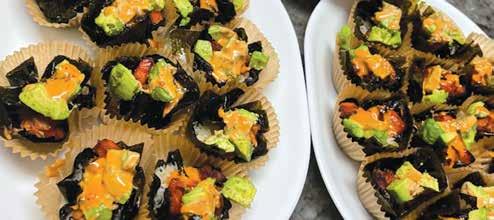
SALMON OR MUSSELS
1 lb boneless, skinless wild-caught sockeye salmon, cubed (can substitute with mussels)



2 Tbsp sesame oil

1 Tbsp honey or maple syrup
½ tsp garlic powder
2 Tbsp coconut amino teriyaki sauce
Salt to taste
SPICY MAYO
¼ cup avocado mayo
2 tsp sriracha sauce
1 tsp coconut aminos
½ avocado, diced small 2 tsp black sesame seeds
Preheat oven to 350° F. Cook rice according to package instructions and set aside to cool. Mix spicy mayo ingredients and set aside. Mix salmon ingredients and set aside. Cut each nori sheet into four equal squares.
Line a muffin pan with unbleached muffin liners. To each nori square, add about 1 tablespoon of rice and top with the salmon mixture. Transfer the filled squares to the muffin pan. Bake 15 to 17 minutes for salmon or 7 to 10 minutes for mussels. Allow the sushi bites to cool slightly and top with avocado, sesame seeds and a drizzle of spicy mayo.
YIELD: 6 SERVINGS
1 rotisserie chicken, shredded
1 cup green cabbage, finely shredded
1 cup purple cabbage, finely shredded
½ cup carrot, finely shredded
¼ onion, sliced
½ cup peanut butter
3 Tbsp coconut aminos
2 Tbsp sesame oil
1 tsp garlic
Salt to taste
Konjac noodles (optional)

Sesame seeds
In a skillet, heat one tablespoon of sesame oil. Add the sliced onions and cook until softened. Add shredded chicken, cabbage, carrot, coconut aminos, remaining sesame oil, garlic and salt to taste. Once the cabbage has wilted and cooked, add the peanut butter. Mix in noodles.

Serve hot, sprinkled with sesame eeds. For a vegan or vegetarian alternative, omit the chicken.
Both recipes used with permission of Madiha M. Saeed, M.D.






Autism Spectrum Disorder (ASD) is characterized by challenges with social interaction and communication. For parents of children with autism, learning to manage this condition requires a multidimensional approach, including consideration of food and nutrition. A personalized, nutritious diet can help manage behavioral problems, health risks and quality of life for kids with autism.
Beth Lambert, executive director of Epidemic Answers, says, “Once you come to understand autism as a whole-body condition, rather than just a brain-based or genetic condition, you start to understand the importance of nutrition in treatment and symptom management.” Not only does a nutritious diet help maintain brain balance, it also helps address many of the nutrition-related concerns that children with autism face, such as food sensitivities and allergies, digestive disruptions, sensory issues with textures and nutrient deficiencies. Each of these issues can impact a child’s behavior.
An essential piece of the autism and diet connection is gut health. Gaby McPherson, MS, RDN, LDN, at Fruitful Nutrition says, “Because a child’s gut health is linked to their brain health, it’s crucial to boost their gut function to reduce these symptoms that

can impact their behaviors. Who wants to go around with a tummy ache and constipation every day?”
Yaffi Lvova, RDN, author of Beyond a Bite: Playful Sensory Food Exploration for ASD and Neurodivergent Kids, advises that individual abilities also should be considered when developing a nutrition plan. “Autistic children often have sensory sensitivities that make it difficult to eat certain (sometimes many) foods,” she says.
Many therapeutic diets have been evaluated for children with autism. Most involve the elimination of one or more foods, which can be challenging for a child that already has difficulty getting a wide variety of nutrients.
A popular option is the gluten- and casein-free diet. Gluten is the protein found in wheat, barley and rye. Casein is a protein found in milk and other dairy products. While some children with autism may be sensitive to gluten or dairy, this is not a one-size-fits-all approach, and there is mixed data in support of this regimen.
Another choice is the specific carbohydrate diet (SCD), which involves limiting certain carbohydrates, processed foods, most dairy, sugar and more, with the goal of reducing food sensitivities and improving the gut microbiome. Mixed outcomes have been reported with this diet due in part to its elimination of high-fiber foods that may be beneficial for brain health. McPherson explains, “Gut bacteria digest (or ferment) fiber in the large intestines to produce short-chain fatty acids, which are known to improve brain health significantly.”
The Feingold diet is another approach that eliminates artificial flavors, sweeteners, preservatives and salicylates. Salicylates are compounds found in certain fruits and vegetables. While there is some evidence that food dyes may play a role in children’s behavior, most studies on this diet have not demonstrated a significant impact on ASD symptoms.





Instead of following a specific therapeutic diet, most experts now understand that a diet for ASD needs to be personalized to each child. It is ideal to work with a registered dietitian that can address nutrient and feeding concerns and is trained to make individualized recommendations. A primary area to focus on, according to Lambert, is correcting vitamin deficiencies, which may play a role in improving behavioral and digestive challenges. Nutrients of concern include zinc, vitamin D, calcium, magnesium and essential fatty acids.
McPherson also relates that fiber should be at the forefront of any diet to address digestive concerns. “While many children on the spectrum may strongly prefer foods like chips, crackers, bread or white pastas, these foods tend to be lacking in fiber,” she says. “Good sources of fiber are split peas, multigrain breads and pears.”

A registered dietitian can also help families evaluate whether a diet is working. Lvova says, “It can be challenging to see whether a specific diet is working or not. When a change is made, the parents and caregivers often pay more attention in order to see if there is a difference, and the child responds positively to the change in attention. By keeping expectations realistic and ensuring a relaxed mealtime atmosphere, your child will have the best chance to meet their nutritional needs.” Ultimately, the goal is to make meals a positive experience for the child, with less emotional investment on which foods they can or cannot eat.
Ana Reisdorf is a registered dietitian and freelance writer with more than 15 years of experience in the fields of nutrition and dietetics.





 by Paige Cerulli
by Paige Cerulli
With nicer spring weather, pets will likely spend more time outside. Whether lounging in the backyard, taking a walk around the neighborhood or venturing out to a dog park, our awareness of potential dangers is important. Despite the risks, there is no reason to keep pets cooped up. With diligence, protecting our furry best friends can become second nature as we safely enjoy the great outdoors together with our pets.
A fenced yard might seem like a safe space for pets, but that is not always the case. “Pesticides, herbicides and fertilizers are just a few of the toxic substances that could be in a pet owner’s yard,” explains veterinarian Alex Schechter, of Burrwood Veterinary, in Royal Oak, Michigan. “These substances can harm dogs and cats if they are consumed or come into contact with a pet’s skin.”
A 2013 study published in Environmental Research found that dogs exposed to

professionally applied lawn care pesticides had a 70 percent higher risk of developing canine malignant lymphoma than dogs that were not exposed to these products.
Schechter recommends that pet owners choose non-chemical lawn management methods that are safe for pets, like neem oil or diatomaceous earth. “Reduce the use of chemicals by using organic farming practices or natural fertilizers,” he says.
Veterinarian Dwight Alleyne, an advisor at Betterpet, cautions that a yard might be home to plants that are poisonous to pets. “Some of these plants could include lilies, sago palms, tulips and oleander,” he advises. “It is important for pet owners who have a backyard to be able to identify any potential hazards before leaving their pet out unattended.”
According to the U.S. Environmental Protection Agency, mouse or rat poison is a popular pest control choice that kills by causing excessive bleeding. Use of this
product can be extremely dangerous to pets if they ingest either a poisoned rodent or the poison itself. Schechter warns, “If you see bait stations or dead rats, those areas may have been treated with a rodenticide.” He advises pet owners to have a conversation with their neighbors, suggesting the use of snap or electronic traps as more humane and less toxic alternatives.

Coal tar sealants used on driveways contain polycyclic aromatic hydrocarbons (PAH) that, according to the U.S. Centers for Disease Control and Prevention, may pass through skin or be inhaled. In large amounts, PAHs can irritate eyes and breathing, and several PAHs are carcinogenic in humans. Avoid sealing driveways with any coal tar products. When out for walks, pet owners should keep their dogs off other driveways, as well.

Dog parks carry several risks, including exposure to intestinal parasites. A 2020 study found that 85 percent of the 288 dog parks sampled had at least one dog infected with gastrointestinal parasites like Giardia, hookworms, whipworms or roundworms. These parasites can be transmitted when dogs eat or sniff poop.
“It is recommended that your dog is on a monthly heartworm preventative, which can help protect against common parasites that they may encounter,” says Alleyne. If a dog regularly visits dog parks, a vet can perform a fecal exam to identify and treat any intestinal parasites that the dog may have contracted.


When visiting ponds and lakes, beware of blue-green algae bacteria, which commonly proliferate in freshwater bodies, particularly during summer months. Dogs can ingest algae by playing in or drinking the water, or when licking their paws. In large quantities, algae can be toxic to dogs (and humans). Because algae are not always visible, keeping dogs leashed around bodies of fresh water is best.

 by Sheila Julson
by Sheila Julson
Born in the mid-to-late 1990s up to the early 2010s, Generation Z environmental activists agree that urgent action is needed to achieve climate justice, and they’re willing to do what it takes to get results. “Climate and environmental justice and environmental racism are very big concerns among youth, whether or not they are youth of color. It’s not just about energy, water or air—it’s also very much about people,” says Ana Garcia-Doyle, executive director of One Earth Collective. The Chicago nonprofit inspires action, facilitates learning and promotes environmental justice through annual programs like the One Earth Film Festival and One Earth Youth Voices, a summit designed to give voice to the next generation’s environmental concerns.
Marin Chalmers, a sophomore at Oak Park River Forest High School, in Illinois, and member of One Earth’s Youth Advisory Council, has been participating in the One Earth Young Filmmakers contest since the seventh grade. Her short documentary, Sondaica, is about wildlife and ecosystems.
Chalmers credits One Earth with helping her connect with people that normally would not be involved with climate activism. Her peers share in the understanding that there’s a climate crisis. “The Earth is breaking,” she explains. “We need to fix it. Everybody needs to do a better job of taking action.” Getting people to pay attention is challenging, Chalmers
laments, especially given America’s overwhelming dependence on automobiles and the lack of public transportation. “A lot of people want to help, but just don’t know how,” she notes. “Some people don’t have the financial ability to make environmentally sound choices.”
Although individual action can help mitigate climate change, 16-year-old Sebastian Delgado, a Revolutionary Youth Action League (ROYAL) volunteer, blames polluting, profit-driven corporations for the climate crisis. “The biggest threat to our climate and people of color is capitalism,” he explains. “We need a new economic system that’s not based on profit.”
ROYAL volunteers like Delgado collaborated with Marlene Brito-Millán, Ph.D., an ecology assistant professor at Loyola University Chicago, and Dr. Bryan Ramson, a nuclear physicist and research associate at Fermilab, to craft a social justice plan that incorporates climate town hall meetings to raise awareness and develop action plans. According to Delgado, even when concerned citizens contact their elected representatives, leaders can be slow to act. “Climate change has been happening for decades, and we’re still dealing with the same issues,” he remarks, adding that bold ideas and unwavering action are needed when government officials won’t listen to their constituents.
In Austin, a predominantly Black neighborhood on the west side of Chicago, two 20-year-olds, Cortez Dean and Ethan Horne, work at paid internships in an urban farming program called Austin Grown, which raises chickens and maintains gardens with vegetables and native pollinators.
A collaboration between One Earth Collective and BUILD Chicago, a nationally respected youth development organization, Austin Grown serves urban communities where fruits and vegetables are hard to find. The organization also offers gardening and healthy eating classes to the public.
Dean is learning firsthand how climate change adversely affects farms, gardens and forests where food and medicinal
plants are grown. During a summer heat wave, he witnessed a sewer pipe explode, filling his neighborhood with a powerful stench, and he worries that aging infrastructure will contaminate their drinking water.

“People assume there’s time to solve climate change, but we’re not slowing things down. There’s a lot of work to be done,” Horne says, noting that food deserts disproportionately affect communities of color. “There are lots of areas with no grocery stores, or stores that only offer chips and candy, but no fruits and vegetables.”
Dean and Horne concur that gardening provides needed green infrastructure and nutritional food to underserved populations. “I didn’t fully understand climate change until I put my hands into the soil. When you do that, you’ll see Earth for what it is—and the damage we’ve done to it,” Dean says.


Originally from Waukesha County, Wisconsin, 21-year-old Grace Arnold feels lucky to have attended two schools with strong environmental programs and student engagement. At the University of Vermont, she participated in marches against fossil fuels and joined lively discussions about climate-related racism at the Social Justice Coalition. Now a student at University of Texas at Austin, she is enrolled in environmental studies classes and notes, “Students are forming environmental clubs. I’m grateful to again be surrounded by people trying to get their voices heard.”
Arnold was a social media volunteer for Plastic-Free MKE, a Milwaukeebased organization dedicated to reducing single-use plastic waste. She credits social media as a powerful tool that helps her generation reach people and organize activism. “Climate change is intertwined with social, economic and political issues,” she relates. “But small actions can make big impacts—and voting is a powerful thing.”

 by Marlaina Donato
by Marlaina Donato
The Earth is both our mother and our muse, sustaining our lives and blessing us with beauty when we make time to notice her perpetual creative forces. She has long inspired expressive souls of all disciplines, but some of our modern innovators are merging talent with the urgent need to minimize toxic impact. This eco-vision has resulted in some awe-inspiring efforts.
In an awareness-based art installation he calls Ice Watch, Danish-Icelandic artist Olafur Eliasson collected 30 blocks of glacial ice found free-floating near Greenland and placed them in public settings across London where passersby could observe them melting.
Artists John Dahlsen and Rox De Luca spotlight the plastic waste catastrophe in their sculptures and paintings by using debris washed up on the shores of Australia’s beaches. Their sculptural assemblages hang from ceilings and criss-cross walls, driving home the prediction by the World Economic Forum that by 2050 our precious oceans will be more crowded with plastic than marine life.
When creating our own art, we can join these stirring visionaries by minimizing toxic impacts.



Buy Earth-friendly art supplies for the kids. The common crayon contains chemicals like formaldehyde and asbestos, which are harmful to humans and the planet. Opt for biodegradable glitter, non-toxic modeling clays and recycled paper. For more sustainable supply ideas, visit Tinyurl.com/ EcoArtSupplies.
Get creative with single-use trash items Paper towel cardboard rolls, plastic shopping bags, bottles, straws and cutlery can be turned into fun projects for kids, teens and adults. Whimsical mobiles, sculptures and magical miniature cities are just a few ideas to conjure while contributing to Earth Day every day. For more ideas, visit Tinyurl. com/SingleUseTrashToArt.
Inspire environmentalism by choosing art implements that celebrate nature. Consider using alternatives to toxic solvents, pigments and varnishes. Look for sustainable brushes made from bamboo or corn and easels fashioned from eucalyptus wood.
Marlaina Donato is a visionary painter who hosts art exhibits for community healing. She is also an author and composer. Connect at WildflowerLady.com.
NOTE: To share your events and classes in our calendar, please visit our websites NABerks.com or NALancaster.com for guidelines and a submission link. Deadline: 5th of the month prior.

Visit our online calendar where you can find updated event and class information and share your events for free.
Meditation – 8-9am. (Sundays ongoing).
Kula Kamala Ashram, 17 Basket Rd, Alsace Twp, Reading. By donation. 484-509-5073. KulaKamalaFoundation.org.
Community Donation Yoga – 9-10am. (Sundays ongoing). Yoga is for everybody regardless of financial state. This yoga class mixes Vinyasa with Alignment; well suited for any level of practice. West End Yoga Studio, 221 W Walnut St, Lancaster. WestEndYogaStudio.com.
Yin Yoga – 9-10:30am. (Sundays ongoing). Kula Kamala Ashram, 17 Basket Rd, Alsace Twp, Reading. By donation. 484-509-5073. KulaKamalaFoundation.org.
Earth Day Preserve Challenge – Every day through 4/22. See Earth Day Events on following page.
Tarot – 10am-3:30pm (Saturdays ongoing). Nancy Warble offers 3-card readings. Drop in or make an appointment. 20 minutes/$13. Radiance/Herbs from the Labyrinth, 13 W Grant St, Lancaster. 717-2901517. HerbsFromTheLabyrinth.com.
Discovery Day – 11am-12:30pm. Check out Take Heart, meet the horses, view a therapy demo and experience what Take Heart is all about. Free. Take Heart Counseling, 699 Wooltown Rd, Wernersville. 610-223-9133. TakeHeartCounseling.com.
Cooking Class: Easter Brunch – 11am-1pm. Ages 16+. Join us for a leisurely morning as cookbook author Valerie Baer teaches this delightful spring menu perfect for your Easter morning or any time this spring. Hands on. BYOB. Registration required. $75. Zest Cooking School, 1180 Erbs Quarry Rd, Lititz. 717-435-8890. ZestChef.com.
Astrology Readings by Leo – 11am-3pm. (Saturdays ongoing). Astrology can help guide us to embrace a more fluid perspective, opening the possibility for grace, choice and participation. $55 for one hour consultation, written copy of the report and a framed birth chart. Radiance/Herbs from the Labyrinth, 13 W Grant St, Lancaster. 717-290-1517. HerbsFromTheLabyrinth.com.
SUNDAY,
Sunday Mindfulness and Meditation – 8-8:45am. Online or in studio. Start the week with a reading and discussion on specific mindfulness topics followed by meditation and open discussion. Pay what you can donation. West End Yoga Studio, 221 W Walnut Street, Lancaster. WestEndYogaStudio.com.
Reiki Level I – 9:30am-3:30pm. Reiki is an excellent self-care tool that is easy to learn and can help you attain balance on all levels; physically, spiritually, mentally or emotionally. CEUs available for licensed massage therapists. Registration required. $185. Integrative Healing Arts Studio, 546 Penn Ave, 2nd Floor, West Reading. 610-451-9577. IntegrativeHealingArtsStudio.org.

April Foraging Walk – 10am-2pm. Join us if you are interested in garnering a better understanding of local plant ecology, gaining knowledge about wild edibles or discovering alternative uses for plants through wildcrafting and medicine and learn about ethical foraging and ways of giving back to the land from which we are taking. Registration required. $25. Horn Farm Center, 4945 Horn Rd, York. 717757-6441. HornFarmCenter.org.
Holistic Health and Healing Expo – 10am-5pm. A preeminent natural wellness, spiritual and green living event of inspiring workshops and event speakers with hundreds of vendors and practitioners offering an amazing array of products, treatments and the latest cutting-edge approaches in natural health, spiritual and sustainability. Free. The Inn at Villanova University, 601 Country Line Rd, Radnor. HHHExpo.com for information or to register.
Unity Church Grand Re-opening – 10:30-11:30am (Sundays ongoing). “Come Re-Create Yourself with Us.” Join in celebration honoring all paths to God. Unity Church of Reading, 4443 10th Ave, Temple. Wisdom Circle – 10:30-11:30am. (Sundays ongoing). Kula Kamala Ashram, 17 Basket Rd, Alsace Twp, Reading. By donation. 484-509-5073. KulaKamalaFoundation.org.
Mindful Yoga – 6-7pm. (Mondays ongoing). Onsite and via Zoom. Slow down your breath, your body, and your mind. First session is
complementary, discounts available. Saint James Episcopal, 119 N Duke St, Lancaster. 717-397-4858. SaintJamesLancaster.org/yoga.
TUESDAY, APRIL 4
Contemplative Prayer/Meditation – 8-8:30am. (Tuesdays ongoing). In person and via Zoom. Free. Saint James Episcopal, 119 N Duke St, Lancaster. 717-397-4858. For the Zoom link, visit SaintJamesLancaster.org.
Coping with the Loss of a Parent or Sibling –6:30-8pm.Via Zoom. Are you grieving the death of someone you care about? Would you like to talk with others who have experienced a loss? This meeting includes a presentation and an informal time to talk with others. Free. Pathways Center for Grief & Loss. 717-391-2413 or 800-924-7610. HospiceCommunity.org.
Group Voice Technique/Coaching Class – 7:158:15pm. (First Tuesdays). This class is for anyone who would like to learn to sing (better!) with and from others in a safe, space setting. Drop in for $20/ class. Offered by Resonate You thru Black Cat Yoga, 796 Lititz Pk, Lititz. ResonateYou.com.
Restorative Yoga – 6-7pm. (Wednesdays ongoing). Onsite and via Zoom. Enjoy easy yoga as a way to gently wind down your day. Bodies are fully supported in relaxed poses with long, gentle holds using props we provide. Free, instructor gratuity appreciated.Saint James Episcopal, 119 N Duke St, Lancaster. 717-397-4858. SaintJamesLancaster. org/yoga.
Cooking Class: Gluten-Free Baking for Every Spring Meal – 6-8pm. Ages 16+. Chef Hannah will teach you how to work well with gluten-free flours and make these “best ever” recipes that could fool anyone into thinking they aren’t gluten-free. Hands on. BYOB. Registration required. $80. Zest Cooking School, 1180 Erbs Quarry Rd, Lititz. 717-435-8890. ZestChef.com.
Coping with the Loss of a Spouse or Companion – 6:30-8pm. Other dates and times available. Via Zoom. Are you grieving the death of someone you care about? Would you like to talk with others who have experienced a loss? This meeting includes a presentation and an informal time to talk with others. Free. Pathways Center for Grief & Loss. 717-3912413 or 800-924-7610. HospiceCommunity.org.
SATURDAY, APRIL 1
Earth Day Preserve Challenge – Every day through 4/22. Grab a preserve passport from The Nature Place and then set off exploring 6 public nature preserves in Berks County. Get your passport validated for a prize on Earth Day. Free. Berks Nature, The Nature Place, 575 St Bernardine St, Reading. 484-883-9729. BerksNature.org.
SATURDAY, APRIL 22
Earth Day of Action: Workday at Climbers Run – 9-11am. Invasive plants take over ecosystems, out compete native vegetation, and cause reductions in biodiversity, but we can fix this problem by removing invasive plants. What better way to give back this Earth Day. Lancaster Conservancy, Climbers Run Nature Preserve, 226 Frogtown Rd, Pequea. LancasterConservancy.org.
Lancaster County Climate Summit – 9am-5pm. An event for everyone to come together to advance climate awareness and take action. Presentations and lectures on energy conservation, plant-based health, regenerative farming, native plants, clean energy and more are held in downtown Lancaster at Fulton Bank, Ware Center, Tellus360, Holy Trinity Lutheran, St James Episcopal, First Presbyterian and First Reformed UCC. Free to attend. For details visit Regenall.org.
Earth 2 E-town Earth Day Festival – 10am4pm. Enjoy live music, food trucks, an earthcentered maker's market, eco-information tables, a green business expo, kids crafts and activities, animal shows, raffle prizes, a community-wide clean-up event, and more. Rain or shine. Free. Earth2Etown@wixsite.com/earthdayfestival.
Berks Earth Day – 12-6pm. Celebrating the 53rd anniversary of the 1970 event jointly with the ongoing City of Reading’s 275th Anniversary. Enjoy live music, educational presentations and workshops, children’s activities, food and craft vendors and more. Rain or shine. Free. Reading City Park, 11th & Constitution Blvd, Reading. EarthDayBerks.org.

Ultimate Health Workshop – 7pm. (Wednesdays ongoing). Learn how you can achieve optimal health. Topics vary by week. Free. Call to reserve your spot. Heath Wellness Center, 14 W. Main St, Landisville. 717-530-5555. HeathChiropractic.com.
THURSDAY, APRIL 6
Contemplative Prayer/Meditation – 8-8:30am. (Thursdays ongoing). In person and via Zoom. Free. Saint James Episcopal, 119 N Duke St, Lancaster. 717-397-4858. For the Zoom link, visit SaintJamesLancaster.org.
Yoga & Blankets & Props, Oh My – 9:3010:45am. (Thursdays ongoing). Gentle yoga practice that uses blankets and props to optimize the practitioner’s experience and support healthy alignment. Appropriate for all levels of experience. Modifications of all postures are available. Kula Kamala Ashram, 17 Basket Rd, Alsace Twp, Reading. By donation. 484-509-5073. KulaKamalaFoundation.org.
FRIDAY, APRIL 7
Contemplative Prayer/Meditation – 6:45-7:15am. (Fridays ongoing). In person and via Zoom. Free. 717-397-4858. 119 N Duke St, Lancaster. For the Zoom link, visit SaintJamesLancaster.org.
Mindful Yoga – 9-10am. (Fridays ongoing). Onsite and via Zoom. Slow down your breath, your body, and your mind. First session is complementary, discounts available. Saint James Episcopal, 119 N Duke St, Lancaster. 717-397-4858. SaintJamesLancaster. org/yoga.
Kids’ Cooking Class: Easter Brunch – 10am12pm. Ages 7-12. Kids’ instructor and artist, Gwen Eberly, teaches confidence in the kitchen with this delicious Easter brunch menu, building essential skills kids will have a blast learning. Hands-on. Registration required. $75. Zest Cooking School, 1180 Erbs Quarry Rd, Lititz. 717-435-8890. ZestChef.com.
Release and Rejuvenate Yoga – 12-1pm. (Fridays ongoing). Onsite and via Zoom. Take a moment for emotional, mental, and physical release. Perfect for all levels of yoga experience. The class incorporates gentle movements with the breath, held poses, breathwork, meditation and relaxing music. Register for yoga online. West End Yoga Studio, 221 W Walnut St, Lancaster. 717-406-9681. WestEndYogaStudio.com.
SATURDAY, APRIL 8
Chakradance Kids – 10-11am. (Every 2ndand 4thSaturday). Ages 5-8. Well-being classes weaving together storytelling, music, movement and art to teach basic social and emotional skills. Mindfulness and calming techniques are also part of the learning with themes of trusting instincts, managing emotions, self-esteem, compassion, imagination and self-awareness. The series ends with a dance party. $15. BLDG 7 Yoga, 220 N Park Rd, BLDG 7, Wyomissing. 610-463-8701. Bldg7Yoga.com.
Cooking with Cannabis Introduction Class –10:30-11:30am. Blend the magic of cannabis with the craft of cooking in this introductory class that will teach you the basics of cooking with cannabis. Learn how to make infused butter and oil to give you the building blocks to include hemp in your dishes. Registration required. $50. Hempfield Apothetique, 100 W Walnut St, Lancaster. 717-824-3094. HempfieldApothetique.com.
SUNDAY, APRIL 9
Mike Tamburo Sound Journey – 6-8pm. Join this special Easter Sound Journey with renowned multi-instrumental recording artist, educator, and Gong Master. $40.Soundwise Health Studio, Suite 263, 313 W Liberty St, Lancaster. 610-301-4356. SoundwiseHealth.com.
Using Small Spaces to Support Nature – 7pm. Learn how native plants can be effective in small spaces, why native plants are important and how small spaces can be stepping stones of survival for the ecology around us. Free. Mennonite Central Committee Welcoming Place, 21 S 12th St, Akron. 717-859-1151. MCC.org.
WEDNESDAY, APRIL 12
Growing Through Grief – 2-4pm. Wednesdays thru 5/17. Adults who are approaching or past the year anniversary of the death of a loved one can explore the impact of their loss and the way they continue to reorganize their life. Free. Space is limited, registration required: 717-391-2413. Ann B Barshinger Hospice Center, 235 St Charles Way, Ste 250, York. HospiceCommunity.org.
FRIDAY, APRIL 14
Healing Violin Meditation with Helena Lalita – 7-8:15pm. Helena Lalita will guide students through gentle mindful movement and pranayama breathing practices followed by a transcendental and ethereal experience of deep savasana and sound bathing. Registration recommended. $20 in advance or $25 at the door if space available. Radiance, 13 W Grant St, Lancaster. 717-290-1517. HerbsFromTheLabyrinth.com.
SATURDAY, APRIL 15
Baird Birding Breakfast – 7-9am. Mix and mingle with members of the Baird Ornithological Society during breakfast and then follow Baird experts on a guided walk. Grab a bite, pull up your binoculars, and come bird watching with us. Free. Berks Nature, The Nature Place, 575 St Bernardine St, Reading. 601-372-4992 x108. BerksNature.org.
Explorers Full Day Drop-Off Program – 9am4pm. Best for children ages 6-14. Drop your kids off at the Nature Place for a full day of exploring Angelica Creek Park, scientific experiments, and other hands-on activities perfect for the curious, adventure-seeker. Registration required. $50 per child. Berks Nature, The Nature Place, 575 St Bernardine St, Reading. 484-883-9729. Support. BerksNature.org.
Lancaster County Women’s Expo – 9am-2pm. The Women’s Expo brings together women of all ages to shop, enjoy mini spa treatments, watch demonstrations, learn about products and services for themselves and their families, and be entertained. Free. Wyndham Resort – Expo Center, 2300 Lincoln Hwy E, Lancaster. 717-285-1350. AGreatWAyToSpendMyDay.com.
Inner Peace Holistic Expo – 10am-6pm. Celebrate 10 years with 80 vendors offering an array of products and services, including crystals and gemstones, reiki, massage, CBD products, wellness items for home and body, speakers, and much more. First 150 guests each day receive a swag bag. $10 for the weekend. Inner Peace Holistic Expo, Hamburg Field House, Pine St, Hamburg. 610-401-1342. InnerPeaceHolisticExpo.com.
SUNDAY, APRIL 16
Inner Peace Holistic Expo – 10am-5pm. See 4/15 listing for details.

MONDAY, APRIL 17
Women’s Memoir Writing Class – 6:30-8:30pm. 5 wks, Mondays thru 5/15. Via Zoom. “Exploring our Life Stories.” A safe haven for capturing the memories that matter to us most. Write From the Heart. Registration required. 717-393-4713. WriteFromTheHeart.us.
TUESDAY, APRIL 18
Voice Embodiment Workshop – 7:15-8:15pm. Every 3rd Tues thru 5/16 Connect through singing, sounding/intoning, movement, joy, and reflection. Taught by Jen Lobo Rose. $20/class. Offered by Resonate You thru Black Cat Yoga, 796 Lititz Pk, Lititz. ResonateYou.com.
WEDNESDAY, APRIL 19
Cooking Class: Burger Night, Mouthwatering, Veggie Combinations – 6-8pm. Ages 16+. Learn how to make the perfect indoor or outdoor burger feast that won’t have anyone wondering where the meat is. Helen Sanya teaches this plant-based menu that is sure to please with fun and delicious flavors from scratch. Hands on. BYOB. Registration required. $75. Zest Cooking School, 1180 Erbs Quarry Rd, Lititz. 717-435-8890. ZestChef.com.
FRIDAY, APRIL 21
Sound Meditation with Monica – 7-9pm. Start with a guided meditation paired with instruments to navigate the busy mind and allow the body to enter relaxation so it can restore itself in its natural rhythm. Registration required. $40. Hempfield Apothetique, 100 W Walnut St, Lancaster. 717-8243094. HempfieldApothetique.com.
SATURDAY, APRIL 22
Chakradance Kids – 10-11am. (Every 2nd and 4thSaturday). See 4/8 for listing information.
Kid’s Cooking Class: Weekend Brunch – 10am12pm. Ages 7-12. Our fantastic kid’s instructor and artist, Gwen Eberly, teaches your kids confidence in the kitchen with this delicious Easter brunch menu. Drop them off for an adventure, building essential skills they’ll have a blast learning. Hands on. Registration required. $75. Zest Cooking School, 1180 Erbs Quarry Rd, Lititz. 717-435-8890. ZestChef.com.
Namaste, A Sensory Exploration of Hindu Spiritual Traditions – 10am-2pm. The experience includes presentations and performances of traditional Indian dance and music, healing forces of music as meditation and prayer, connection between classical yoga poses and dance movements and finding more light and energy in our bodies. $50. Saint James Episcopal, 119 N Duke St, Lancaster. 717-397-4858. SaintJamesLancaster.org/namaste.
SUNDAY, APRIL 23
Comprehensive Reiki Instruction – 10:30am4pm. A review of Reiki I, learn Reiki II power symbols, receive attunement to the second degree of Reiki; practice sending Reiki through space and time and sending Reiki as a group to offer healing to an entire planet. Student will receive Reiki II Certificate. $200 with $50 deposit. Radiance, 13 W Grant St, Lancaster. 717-290-1517. HerbsFromTheLabyrinth.com.
SATURDAY, APRIL 29
12th Annual Native Plant & Wildlife Festival – 8am-1pm. Encounter education about the use of native plants and best conservation practices as well as five native plant nurseries selling plants, Raven's Ridge Wildlife Rehab presentation at 9am, speakers throughout the event, and more. Overlook Park, 595 Granite Run Dr, Lancaster. LancPlantFest.org.
MONDAY, APRIL 30
Baby Goat Yoga – 9-10am. Get a good yoga workout led by a certified instructor or just play with baby goats. Held outside in goat pasture or inside our pole barn in bad weather. Registration required. $25. Swartz Roadside Stand, 1641 Alleghenyville Rd, Mohnton. 610-790-5339. SwartzRoadsideStand.com.
Introduction to the Fundamentals of the Art and Science of Sound Healing – 9:30am-6pm. Learn the foundational principles and teachings for becoming a knowledgeable and skilled sound practitioner. Student manual, certificate, metal and crystal singing bowls practicum. Registration required. Firefly Hollow Wellness, 200 Farm Ln, York. 717-8149136. FireflyHollowWellness.com.
SATURDAY, MAY 6
11th Annual Plant Sale – 9am-3pm. Offering a variety of organic vegetable, herb, and flower starts, trees, shrubs, and native grasses, herbaceous perennials, and vines, all grown by the Horn Farm Center and our renting farmers. Horn Farm Center for Agricultural Education, 4945 Horn Rd, York. 717-757-6441. HornFarmCenter.org.
Spring Organic Market – 10am-4pm. This market will have quality seedlings and soil amendments, learning and networking opportunities, plenty of expert gardening advice from our growers as well as local vendors and food trucks with organic lunch options. Free. Rodale Institute, 611 Siegfriedale Rd, Kutztown. 610-683-6009. RodaleInstitute.org.
SUNDAY, MAY 7
Full-Body Reflexology Certification Course – 10am. Learn techniques to promote healing of the body in a natural and restorative way. This process elevates the body’s own natural electrical energies. Head-to-toe alignments including hips, tailbone, shoulders, pelvic and much more. These techniques help to align the body often offer immediate relief of pain. Provider #155 NCBTMB. 12 CEU. $425. Health Quest Holistics, 1517 N 7th St, Lebanon. 717-228-0612, Healthquest4life.com.
Fascia, Breath and Movement – 5:30-7:30pm. Explore connections between your connective tissue, your joints, and your stiffness. Learn gentle movements to self-massage in order to release pain and prep the body for bigger movements. As breath brings vitality to fascia as well as our organs, learn breath movements to aid in the release of fascial tension. $25. Saint James Episcopal, 119 N Duke St, Lancaster. 717-397-4858. SaintJamesLancaster. org/workshop.
Reiki I Shoden – 6-9pm. Wednesdays thru 6/14. Learn all the essential elements of Reiki in this extended format class. Each week builds upon itself and will leave you feeling confident in your practice. At the start of each class, we will discuss your week’s practice and encourage and support each other through the process, building a sense of a community. This will include elements of mindfulness meditation and learning to be okay with things as they are. There is no prerequisite. $250. Registration required. Liberty Place, 313 W Liberty St, Lancaster. 717-269-6084. HeleneWilliamsReiki.com.
SATURDAY, MAY 20
Foundations of Yoga – 1:30-3:30pm. Explore foundational poses of yoga in a mindful manner and learn to safely modify them to accommodate different body types and abilities. Attention will also be given to incorporating breath into your movement. Open to those new to a physical yoga practice and experienced practitioners. $25. Saint James Episcopal, 119 N Duke St, Lancaster. 717397-4858. SaintJamesLancaster.org/workshop.
MONDAY, MAY 22
Women’s Intro Writing Class – 6:30-8:30pm. 5 wks, Mondays thru 6/26. Via Zoom. “Writing Without Fear.” A warm and welcoming community of trust, kindness and understanding. Learn to write freely without perfection and self-doubt. Beginner’s welcome, sharing optional. Write From the Heart. Registration required. 717-393-4713. WriteFromTheHeart.us.
MONDAY, JULY 24
Teen Summer Writing Camp – 10:30am-12:30pm. 3 sessions, 7/24, 7/25 and 7/28. Via Zoom. A nonintimidating, free-spirited look at how creativity flows when we let go of our inhibitions. Through kindness, and a touch of mischief, we spark both intellect and imagination, in an inviting atmosphere where it’s cool to be yourself. No grades, grammar or judgement. Write From the Heart. Registration required. 717-393-4713. WriteFromTheHeart.us.
Fee for classifieds is $1 per word per month. To place listing, email content to Advertising@NALancaster.com. Deadline is the 10th of the month.
FOSTER PARENTS URGENTLY
NEEDED | YOU can make a difference in the life of a child. There is a shortage of foster parents in our area and loving, stable homes are needed to provide safety, stability and care. Find out more by calling 610-655-5555 or visit BuildingKidsLives.org.
MAGAZINE DELIVERY | Needed for 30-40 Lancaster city locations. 1x/monthly for approximately 3 hours. Must have liability insurance and an insured vehicle. Contact Publisher@NALancaster.com.
WORKSHOP/CLASS FACILITATORS
WANTED | Share your expertise with onetime or ongoing classes. We offer an excellent location and publicity. For information: 717517-7056 or Support@Divine-Dragonfly.com. Divine-Dragonfly.com.
WANT A HEALTHIER LIFE? I’ll answer questions about natural products costing the same or less than store-bought name brands. From cleaning products to supplements, there are 400+ products available. Ask about secondary income opportunities. Call Ted: 717-284-2212. Sat/Sun, 10am-3pm.
community. To find out how you can be included in the Community Resource Guide, email Advertising@NALancaster.com or visit NALancaster.com or NABerks.com.
LANCASTER ACUPUNCTURE
Beverly Fornoff

Eden Natural Care Center
600F Eden Rd • Lancaster
717-381-7334 • LancasterAcupuncture.com
Discover your body’s natural ability to heal with the supports of acupuncture and herbal medicine. Acupuncture is a way to relieve acute or chronic pain, stress, allergies, colds, digestive problems, and insomnia and support your overall well-being. See ad, page 41.

SUPERNATURAL WELLBEING, LLC

Grace Henderson, LMT
342 N Queen St • Lancaster
SupernaturalWellbeingLLC@gmail.com
Offering a wide range of bodywork and holistic wellness services to support your wellbeing, harmony and balance of mind/body/spirit, guiding you to the realization that you have always been perfect while empowering you to make necessary changes to create the fabulous life you want to live. LGBQTIA+ friendly.
CEDAR MEADOW FARM

CedarMeadow.farm
717-723-3770
Hello@CedarMeadow.farm
CBD is better when it comes from a single farm that’s been dedicated to regenerative practices non-stop for over 30 years. That’s what we do. Discover why Better Soil makes Better Oil. Deeply rooted in Lancaster, PA. See ad, page 3.
HEMPFIELD BOTANICALS

HEMPFIELD APOTHETIQUE
100 W Walnut St • Lancaster
717-874-8480
HempfieldBotanicals.com

Hempfield Botanicals embraces that wellness is the foundation for living a full and vibrant life. We create the THC-free and fullspectrum CBD products to help people find relief from pain and inflammation, sleep problems, anxiety, headaches, lack of energy and more. Certified B-corp, vegan, certified cruelty-free, sustainable and third-party tested. See ad, page 39.
NIGHT AND DAY CBD HUB
NightAndDayCBDHub.com
NightAndDayEnt2018@gmail.com
484-752-0019
Birthed from Night and Day Network LLC, Night and Day CBD Hub is a CBD online shop where you will find alternatives to smoking tobacco cigarettes and effective methods for pain relief. Our CBD products are grown and manufactured with the upmost quality in Lancaster County, PA. See ad, page 35.
CHILDREN’S HOME OF READING
1010 Centre Ave • Reading
BuildingKidsLives.org
610-478-8266
Serving children and families in crisis for over 135 years, the Children’s Home of Reading (CHOR) is a multi-faceted social service nonprofit offering specialized residential, educational and community-based programs to help both at-risk children and their families. See ad, page 15.


Dr. Andrew Ashton
Home delivery magazine subscription: 6 issues: $18 / 12 issues: $30 / 24 issues: $50


Covers postage and handling.
Visit our website to subscribe NALancaster.com | NABerks.com or call 717-399-3187
Or read our FREE DIGITAL issue online.
Lancaster-Berks NALancaster.com | NABerks.com
313D Primrose Ln • Mountville
717-285-9955 • ATherapeuticEffect.com
Providing an array of therapeutic treatments and services that promote relaxation and detoxification. Our doctor specializes in low-impact Torque Release Technique which provides immediate results for people of all ages. See ad, page 2.
Connecting you to the leaders in natural health care and green living in our
There are no passengers on spaceship earth. We are all crew.
~Marshall McLuhan
BLUE SKIES CHIROPRACTIC
Dr. Leah Reiff


2727 Old Philadelphia Pike • Bird-in-Hand
717-390-9998 • BlueSkiesChiroHealth.com
Chiropractic is used for natural relief from conditions such as chronic pain, injuries, pregnancy complications, complications from aging & more. Dr. Reiff carefully considers every individual's comfort level & provides specific adjustments to support the body for benefits that will last.
DR. SUPER’S HOUSE OF HEALTH
2209 Quarry Dr, Ste B-21 • West Lawn
610-601-9011
DrSupersHouseOfHealth.com
At Dr. Super’s House of Health, we believe in a personalized approach to health care. We do things the right way, all the time, every time. Discover the healing power that lives within you and take control of your health again. See ad, page 33.
HEATH CHIROPRACTIC & WELLNESS CENTER LLC
Thomas Heath, DC
14 W Main St • Landisville
717-530-5555
HeathWellnessCenter.com
For 33 years, Dr. Heath has been helping people recover their health and reduce stress in their lives through Functional


Integrative Brain /Body Balance. He uses Professional Applied Kinesiology, Neuro Emotional Technique, Quantum Neurology, Nutritional counseling, traditional Chiropractic and other cutting-edge techniques. See ad, page 23.
LINK CHIROPRACTIC CLINIC
Dr. Thomas B. Wachtmann, DC

3130 Pricetown Rd • Fleetwood
610-944-5000
DrWachtmann.com
High-quality, patient-focused Chiropractic Care, and Functional Diagnostic Medicine evaluation and treatment. We focus on correcting the underlying causes of many disorders, diseases and conditions. Call for a complimentary consultation and benefit check. See ad, page 35.
THE SPINE & WELLNESS CENTER
3933 Perkiomen Ave • Reading
610-779-4588
SpineAndWellness.org
Dr. Borja has 23+ years of experience and is a trusted Chiropractor to many primary care doctors, surgeons and pain management offices. He and his team specialize in auto and work injuries as well as sports concussions, acute/chronic spine pain, daily sprains and strain, sciatica and headaches. See ad, page 13.
MIND/BODY WITH RENEE
Renee Mendenhall, LMT
210 W Grant St, Ste 304 • Lancaster
717-330-8171
MindBodyWithRenee.com
Experiencing chronic pain? Become educated and heal through awareness of the mind/ body connection. Renee helps clients identify and process the unresolved stress/emotions, thought patterns, and beliefs at the root of their physical pain through intuition, Emotional Freedom Technique and Psych-K.

INSHANTI
Debra Stoltzfus
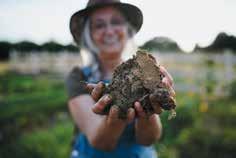


48 Slaymaker Hill Rd • Kinzers 717-587-3990 • Inshanti.com
Trust a nationally certified aromatherapist specializing in clinical consultations. Deb can work directly with your physician to create a plan that supports mind and body health. In addition to retail and wholesale accounts of proprietary blends and pure essential oils sourced directly from the farmers, halfand full-day education courses with certification are offered. See ad, page 41.
CREATE A LIFE WORTH LIVING
Stephane Poncelet

570-449-2219
Calwl2022@gmail.com
As a result of our sessions, you will observe and respond to the conflict, emptiness and loneliness that stem from family disfunction and mourn the unchangeable past. You will own your truth, grieve your losses, and become accountable for how you live your life today. You will show yourself the love, patience and respect you deserve as you create a life worth living!

Like music and art, love of nature is a common language that can transcend political or social boundaries.
~Jimmy Carter
GREY MUZZLE MANOR
1164 Blattadahl Rd • Mohrsville
610-655-5271
GreyMuzzleManor.com
Facebook.com/GreyMuzzleManor
Marcy Tocker, MA, utilizes person-centered and strength-based therapeutic approaches. She specializes in animal assisted therapy, EAGALA model equine therapy, play therapy, and art therapy. Marcy believes that therapeutic change occurs when we provide empathy, unconditional positive regard, acceptance, and being there to support while our clients discover the strengths they've always carried.

M. HARNISH COUNSELING & SPIRITUAL DIRECTION

Malinda Harnish Clatterbuck, MA (she/her)
228 E Orange St • Lancaster
717-875-5066
MHarnishTherapy.com
The work of healing and formation begins as we listen to what is going on in our inner life, what is happening in our heart and in our head. Using compassion and deep listening, I will be present with you and help you along your way.
TAKE HEART COUNSELING & EQUINE ASSISTED THERAPY 699 Wooltown Rd • Wernersville 717-917-7137

TakeHeartCounseling.com
Empowering individuals and families to find hope, healing and wholeness through therapeutic work with horses. Trauma-informed services address trauma, anxiety, depression, self-worth, spirituality, family issues. Offering individual and group sessions.
CENTER FOR TMJ & SLEEP DISORDERS

Dr. Tammy Balatgek, DDS


2433 Morgantown Rd #200 • Reading
610-796-2835
TMJSleepCenter.com
Dr. Tammy Balatgek and her team provide a conservative, nonsurgical approach focusing on the diagnosis and treatment of TMJ disorders, management of snoring/ obstructive sleep apnea (OSA), and acute and chronic facial pain. They restore their patient’s quality of life by relieving pain and improving sleep. See ad, page 9.
SCHWARTZ FAMILY DENTAL
David A. Schwartz, DDS, PC 701 Jefferson Blvd • West Lawn 610-670-6910
SchwartzFamilyDental.com
We provide general and cosmetic mercury-free dental care to the entire family with attention to “whole person health.” We have advanced training in the safe removal of mercury fillings, nonsurgical gum treatments, orthodontics, sleep apnea, solutions for TMJ, facial pain, and headaches. Visit our website to learn more. See ad, page 19.
SUSQUEHANNA DENTAL ARTS
100 S 18th St • Columbia
717-684-3943 • 717-285-7033
SusquehannaDentalArts.com
We are a fullservice family dental practice providing 100% mercury-free restorations, quality non-surgical periodontal care, INVISALIGN, implant-retained dentures and partials. See ad, page 5.
ANY LAB TEST NOW
235 Bloomfield Dr, 110 Bldg B • Lititz 717-207-7604
AnyLabTestNow.com/Lititz
Any Lab Test Now makes it easy for consumers and businesses to manage their health! We provide direct access to clinical lab tests, DNA tests, and drug- and alcohol-testing services, vitamin B12 injections and more. See ad, page 45.
PEACEFUL PASSAGES
Elena Snyder, LPN 215-859-2556
Facebook/PeacefulHospiceCare
With over 20 years experience in hospice end of life care, Elena provides personalized, hands-on, end-of-life comfort care services such as nursing care, companionship, education, emotional support and spiritual guidance through life ’ s final journey.
Dr. Mary Regan, DNP, CRNP, IFMCP 2207 Oregon Pike, Suite 301A • Lancaster


MR@FH-Lancaster.com
717-490-6227 (call or text)
FH-Lancaster.com
Are you looking for a holistic root cause approach to your health and wellness? Functional Health of Lancaster provides comprehensive adult primary care, functional medicine, nutritional support, thermography and yoga therapy, addressing your important health needs and wellness goals. Membership plans available. See ad, page 25.
KULP NUTRITION & WELLNESS
Dr. Donna Kulp, DC, DACBN, IFMCP 52 Morgantown Road • Reading 610-208-0404

KulpNutritionWellness.com
Dr. Donna Kulp helps patients achieve health and wellness goals through finding the root cause of specific health needs. She takes into consideration individual biochemistry, health history, genetics, lifestyle, exercise and stress to create customized wellness programs that address the interaction between the external environment and the internal environment of the body, including the immune, endocrine and gastrointestinal systems. See ad, page 19.
LANCASTER BRAIN & SPINE
221 Granite Run Dr • Lancaster 717-299-9600
LancasterBrainAndSpine.com

Our mission is to improve the lives of people suffering from complicated neurological and musculoskeletal conditions, by utilizing cutting-edge diagnostic testing and customized brainbased treatment plans. See ads, pages 3 and 43.
HERBS FROM THE LABYRINTH
Master Herbalist Sarah Preston Radiance, 13 W Grant St • Lancaster 717-290-1517

HerbsFromTheLabyrinth.com
Long-time Herbalist Sarah Preston crafts small-batch herbal body-care and wellness products, teas, tinctures, syrups, salves and creams using organically grown and ethically sourced wildcrafted herbs. Consultations and custom blends available. Products found at Radiance and Lemon Street Market, both in Lancaster. See ad, page 11.
I believe that one person can make a difference.
~Greta Thunburg
TRANSFORMATIONAL HEALING
Asha Scatchard, BHSP, IKH

717-843-5672
EnergyBodyworks.com

Brennan Healing Science Practitioner, 25 years’ experience. Healing on the physical, mental, emotional, spiritual levels of your being. Early forgotten life experiences and traumas are stored in the body’s cellular memory and continue to affect adult experiences and relationships. Healing these distortions allows your body to heal on many levels affecting your health and well-being. Distance healing available via Zoom.
PEACE N REIKI
Nancy Mintzer


610-463-8701 ph/txt
Peace.N.Reiki@gmail.com
PeaceNReiki.com
Are you at a crossroads in your life, in a career change or a relationship change... ready to step into purpose...looking for clarity & direction? Through Chakradance, reiki, thought coaching, women circles and meditation, Nancy has the tools to help you return to balance and well-being. See ad, page 11.
RESTORE YOUR ENERGY
Deb Gallagher, RN, AP Lancaster

717-203-9666
RestoreEnergy12@gmail.com
RestoreYourEnergy.org
Experience Eden Energy Medicine, a practice created by Donna Eden, healer, author and teacher. This method assists with balancing our nine energy systems which can become blocked by stress, pain and illnesses. When the energy is balanced, sleep, joy, concentration and immunity improve, and our body’s natural ability to heal can begin.
WISE WOMAN HEALING
Pamela Craddock, CNM
31 S Lime St • Lancaster
14 Preston Rd • Reinholds
717-925-7462
WiseWomanHealing.us
With over 42 years of nursing and midwifery experience, Pamela recognizes the interconnectedness of the body, mind and spirit and how imbalances can affect overall health. With compassion and experience she will work with you to formulate a plan that will help you achieve optimal health and wellness. See ad, page 37.



DC EAGER SERVICES
Darlene Eager
Hoarding Services, Mold Remediation, Safe Demolition
6 E Kendig Rd • Willow Street
717-989-5763
DCEager.com
Hoarding and excessive clutter can hide health threats such as mold, bacterial growth, insect and rodent infestation. With respect and sensitivity, DC Eager will professionally and discretely provide the clean-up needed to return the home to a healthy state. Also offering mold remediation and safe demolition. Free assessment. See ad, page 9.
Green Cleaning Professionals
Samantha Hughes
SamanthAnneHughes@yahoo.com
717-538-6383
We offer weekly, bi-weekly, or monthly services, as well as “deep cleaning” and organizing using organic safe environmentally kind products. We’d love to help meet specific goals and desires to make your home healthy and happy! Please reach out to schedule a free consultation. See ad, page 43.
NICK D’ORAZIO, MD
Strasburg Health Associates

181 Hartman Bridge Rd • Ronks
717-687-7541 • DrNickDorazio@gmail.com
Physician board certified in integrative and holistic medicine employs a wide variety of treatment modalities including Ayurveda, IV treatments including chelation, homeopathic, herbal, and nutritional medicine, natural injections, physical rehabilitation, and bodywork. Dr. D’Orazio is a physician who lives what he teaches.

AQUA BLUE WELLNESS CENTER
2435 Old Philadelphia Pk Smoketown • 717-656-8615
AquaBlueWellnessCenter.com
We offer a range of IV hydration vitamin and mineral therapies to support your wellbeing. IV therapies can support hydration, weight loss, increased energy, improved immunity, address nutrient deficiencies and more. See ad, page 7.
LAB TESTING
ANY LAB TEST NOW
235 Bloomfield Dr, 110 Bldg B • Lititz
717-207-7604
AnyLabTestNow.com/Lititz
Any Lab Test Now makes it easy for consumers and businesses to manage their health! We provide direct access to clinical lab tests, DNA tests, and drug- and alcohol-testing services, vitamin B12 injections and more. See ad, page 45.
AQUA BLUE WELLNESS CENTER
Electro-Lymphatic Therapy

2435 Old Philadelphia Pike • Smoketown 717-656-8615 • AquaBlueWellnessCenter.com
Our lymphatic system plays an important role in supporting our immunity. Over the past 18 years of treating our clients, we’ve found that supporting the proper flow of lymphatic fluid through electrolymphatic therapy positively affects many conditions including:
Lymphedema, edema, cancer, Lyme disease, heart disease, enlarged prostate, post-injury/surgical healing and more. See ad, page 7.
GARDNER’S MATTRESS & MORE
830 Plaza Blvd • Lancaster
717-299-6228
GardnersMattressAndMore.com
Gardner’s is a locally owned mattress store offering a wide selection of quality natural and organic mattresses ranging from the luxurious to economical. Educating our customers on getting a good night’s sleep and the benefits of sleeping naturally and organically is our mission. To learn more and schedule sleep consultation visit GardnersMattressAndMore.com/Natural. See ads, pages 31 and back cover.
PANGEA MEDIATION
717-219-7174
Mila@PangeaMediation.solutions
PangeaMediation.solutions
At Pangea Mediation, we aim to provide the space and tools needed to resolve conflicts in a healthy and productive manner through mediation, conflict coaching and training. We specialize in coparenting, separation & divorce mediation. Let’s get started! See ad, page 38.

DIVINE DRAGONFLY
1841 Columbia Ave • Lancaster
717-517-7056
Divine-Dragonfly.com

A spiritual and metaphysical store, Divine Dragonfly carries a wide selection of ethically sourced crystals, sustainably sourced herbs, and sage. The store also features a variety of candles, incense, books, Oracle and Tarot cards, tapestries and dreamcatchers. See ad, page 4.

WAXWING ECOWORKS CO.

Elyse Jurgen, MEd, CBLP 717-676-1045
WaxwingEcoWorks.com
Waxwing EcoWorks Co. offers native/ecological gardening consultation, design, build, stewarding and educational services to enhance human well-being and support dwindling wildlife populations. We work alongside you to make your vision come to fruition! Explore our website and on-line listing for more details. See ad, page 23.
BERKS NATURE/THE NATURE PLACE
575 St Bernardine St • Reading
610-372-4992
BerksNature.org
Berks Nature is a 501(c)(3) non-profit organization that has been serving the Berks County community since 1974. From land preservation and trail management to environmental education and community engagement, our work centers on one simple value: that nature is essential

BY DESIGN CLINIC
Jeannie Peck, Traditional Naturopath

352 E Main St, Ste 100 • Leola
717-556-8103
HBDClinic.com
We provide nutrition and detoxification services for adults and children using an integrative functional medicine approach. Getting to the root cause and addressing the whole body with natural solutions is what we do. We offer nutritional consultations, professional supplement recommendations, ionic foot detox and salt and sauna therapy. See ad, page 46.
Michelle Conicello, Traditional Naturopath
495 Highlands Blvd, Suite 103 • Coatesville 717-326-3338
Michelle@HoneysuckleWellness.com
Restore your body naturally. Michelle provides whole-family wellness with years of experience and tools to achieve emotional balance, detoxification, support for your immune and lymphatic systems and help with food sensitivities, chronic conditions, and more. See ad, page 37.

Ann Lee, ND, L.Ac
112 Cornell Ave • Lancaster
717-669-1050
DoctorNaturalMedicine.com
Learn how your symptoms are connected, get answers, and achieve improved health and wellbeing as we facilitate your body’s ability to heal itself through acupuncture and naturopathic medicine. Special focus on hormone balancing and fertility (now offering DUTCH hormone testing).

Lori Borja, RN, MS, CNS 3933 Perkiomen Ave • Reading

610-779-4588
SpineAndWellness.org
Clinical nutrition service based on a comprehensive assessment, each client receives a personalized treatment plan to help them re-balance and restore the body. Lori will provide specific recommendations for the client’s individual needs. One-on-one support is given to help clients reach their goals and live healthier lives. See ad, page 5.
TILL WE MEET AGAIN
In-home Pet Euthanasia

717-808-4654
TillWeMeetAgain.com
For some, euthanasia of their pet at the veterinary hospital is simply not an option. Dr. Mark Huber and his wife Stacey provide home euthanasia for dogs and cats in the most comfortable environment possible⸻your home⸻with the intention of bringing peace and comfort to ease the pain of losing a beloved pet. See ad, page 13.
GSL ORGANICS

216 S Church St • Quarryville
717-844-1444
GSLOrganics.org
With over 25 years of experience, owner Candy St. Martine-Pack, a certified aroma-therapist, formulates all skincare products using natural and organic ingredients to treat a variety of skin issues including, eczema, psoriasis and the effects of aging. See ad, page 39.
CENTER FOR TMJ & SLEEP DISORDERS
Dr. Tammy Balatgek, DDS



2433 Morgantown Rd #200 • Reading
610-796-2835
TMJSleepCenter.com
Dr. Tammy Balatgek and her team provide a conservative, nonsurgical approach focusing on the diagnosis and treatment of TMJ disorders, management of snoring/ obstructive sleep apnea (OSA), and acute and chronic facial pain. They restore their patient’s quality of life by relieving pain and improving sleep. See ad, page 9.
JenLobo Rose
Lititz/Lancaster
ResonateYou@gmail.com
ResonateYou.com
Jen Lobo, a voice teacher for over 20 years, will help guide you to release your singing or sounding voice to help in your own personal well-being and healing. Offering private lessons, group classes and sound meditations.
SOUNDWISE HEALTH ASSOCIATES, LLC

Lana Ryder, Director and Senior Instructor
313 W Liberty St, Suite 263 • Lancaster 610-301-4356
SoundwiseHealth.com
Throughout the region our trained and experienced professional practitioners offer individual intuitive sound therapy sessions, group immersions, sonic massage, ReikiSound, ReikiVoice, and hospice CareSound. Also offering sixmonth sound school and individual classes for fundamental education in the art and science of sound healing. Sharing the healing power of sound, voice and music for 50 years.
KWEE-JACK FISH CO
Wild Alaskan Salmon & Halibut Shares
717-842-0180
Sustainably harvested wild Alaskan salmon and halibut available, fisherman-direct. Pre-order annually (spring) at EatWildSalmon.com for local pick-up (fall) of sushi-grade delicious nutrition, deep-frozen at the peak of freshness to enjoy throughout the year. See ad, page 29.
URBAN WELL—A SOURCE FOR CONTEMPLATIVE SPIRITUALITY
Saint James Episcopal Church
119 N Duke St • Lancaster 717-397-4858 UrbanWell.org.
…where diverse people with different faiths gather in a spirit of humility and openness to learn from one another how to quiet the noise of everyday life, become more grounded and find energy, serenity and rest. See ad, page 11.
WRITE FROM THE HEART
Creative Writing Workshops

Melissa Greene • Lancaster
717-393-4713 • WriteFromTheHeart.us
Our uplifting, be-who-you-are workshops awaken the creative spirit, gently, without intimidation. Taught in an atmosphere of warmth, whimsy and trust, they are a safe haven for all ages. Especially those who long to overcome perfectionism and selfdoubt. No grades or red pen. Sharing optional. Mischief a must. See ad, page 10.
AQUA BLUE WELLNESS CENTER
Lori Martin, BCNP 2435 Old Philadelphia Pike • Smoketown 717-656-8615 • AquaBlueWellnessCenter.com

A family wellness center offering thermal imaging for breast and body, detox therapies, therapeutic and oncology massage, lymphatic drainage, a full-spectrum infrared sauna, nutritional education and more. Thermal imaging is a safe, non-invasive procedure for early detection of sources of pain, injury and disease. See ad, page 7.
Michelle Conicello, Traditional Naturopath
495 Highlands Blvd, Suite 103 • Coatesville 717-326-3338
Michelle@HoneysuckleWellness.com
Digital Thermal Imaging is a proactive tool to assess problems in the body before they can be seen or felt. An assessment tool that is non-invasive, painless, with no radiation or direct contact with the body, it is a proactive step towards achieving your optimal health. See ad, page 37.
SHALOM THERMOGRAPHY
Darlene Heath, DC, CTT
14 W Main St • Landisville 717-530-5555
HeathWellnessCenter.com
Thermography provides a noninvasive view of potential health concerns in the breast and body. Used as a risk assessment tool, thermography is able to detect inflammation and metabolic changes, and offers a proactive, prevention-focused approach to health care. See ad, page 23.
HEALTH BY DESIGN
Jeannie Peck, Traditional Naturopath 352 E Main St, Ste 100 • Leola 717-556-8103






HBDClinic.com
We help you reach your weight-loss goals by offering customized science-based weight loss options and detoxification services. Our goal has always been to help you get the weight off and educate you on how to keep it off. Offering the guidance of over 30 years experience, you will see results and feel amazing. See ad, page 46.
KULA KAMALA FOUNDATION & YOGA ASHRAM
17 Basket Rd • Reading 484-509-5073
KulaKamalaFoundation.org

Kula Kamala Foundation is a nonprofit, non-sectarian spiritual center dedicated to mindfulness, non-violence, unity, and healing. Our public and professional programs serve people from all walks of life. No matter who you are, we have something special for you. OM. Peace. See ad, page 33.
MINDFUL YOGA AT SAINT JAMES

119 N Duke St • Lancaster 717-397-4858
SaintJamesLancaster.org/Yoga
A simpler style of yoga that helps achieve a higher level of connection with one’s mind, body and spirit by focusing on the present moment. Is suitable for a wide range of body types and abilities. In-person and via Zoom. See ad, page 11.
WEST END YOGA STUDIO

221 W Walnut St • Lancaster WestEndYogaStudio@gmail.com WestEndYogaStudio.com
A diverse yoga studio offering a full range of yoga, meditation, and movement classes, in studio, outdoors and virtual. We are community-oriented, creating a welcoming learning environment dedicated to healing and compassion. All ages and levels welcome. Offering New Student Unlimited Monthly passes and other discounts.
The thyroid gland regulates metabolism by releasing hormones called thyroxine (T4) and triiodothyronine (T3). When the thyroid underperforms, it causes everything in your body to work less efficiently. This is known as hypothyroidism. Hypothyroidism affects more than 30 million American adults and is five to eight times more common in females.1 By conservative estimates, one in eight women will develop hypothyroidism.1
The most common cause of hypothyroidism is an autoimmune disease called Hashimoto’s thyroiditis. This makes up 75-85% of hypothyroid cases. Oftentimes, people with Hashimoto’s struggle to find a medication or treatment plan that works for them and continue to suffer through symptoms like:
• Fatigue
• Feeling cold
• Losing hair
• Gaining weight
• Depression
While there are many treatment options for hypothyroidism, not all are created equal. Selecting the most appropriate one is vital to managing this disease.
Some commonly used prescription drugs that can interfere with thyroid medication absorption and efficacy:
• Antacids
• Lithium
• Amiodarone
• Antibiotics
• Antidepressants
• Dopamine agonists
• Colestipol
• Cholestyramine
• Estrogen, testosterone
The two hormones to remember are T4 (thyroxine) and T3 (triiodothyronine). T4 circulates throughout your bloodstream and is stored in your tissues until needed. Once your body finds a need, it converts T4 into T3. Establishing the exact levels of T4 and T3, and determining if the conversion process is working normally, are critical to designing the best treatment approach.
While most healthcare providers understand the critical nature of T4 to T3 conversion, many fail to recognize the factors that affect this process. These include:
• Nutritional deficiencies/excesses
• Autoimmune diseases
• Gastrointestinal diseases such as celiac disease, acid reflux, or irritable bowel syndrome
• Use of interfering medications like proton pump inhibitors (Nexium® and Prevacid®, for example) or H2 blockers (Tagamet®, for example), which inhibit the dissolution and absorption of thyroid hormone tablets
• The body’s own obstacles to converting T4 to T3
Some people continue to suffer from hypothyroid symptoms despite being on medication for years. But with some effort, patients can work with their doctor to find an approach that works for them.
Some commonly used nutraceuticals that can interfere with the absorption of thyroid medicines:
• Iron
• Calcium
• Magnesium
• Chromium picolinate
Some foods that can interfere with absorption of medication:
• Soy products
• High-fiber/high-bran foods
• Calcium-enriched foods/beverages
Digestive complications or diseases such as celiac disease, autoimmune gastritis, and irritable bowel syndrome can also complicate thyroid hormone therapy.
Make sure to discuss with your doctor all of your medical conditions, medications (both prescription and nonprescription), and nutritional supplements before starting or switching thyroid hormone therapy.
Dr. Raquel Espinol graduated with honors and received her doctorate in naturopathic medicine from Sonoran University of Health Sciences (formerly Southwest College of Naturopathic Medicine). She struggled with her own thyroid condition, which was not successfully managed until she discovered naturopathic medicine and worked with a naturopathic doctor to control her condition. This firsthand success inspired her to pursue a career in naturopathic medicine specializing in thyroid diseases.
Dr. Espinol works with men and women addressing thyroid conditions, hormone imbalances, and weight loss. She is licensed to practice in Arizona, California, Oregon, Washington, Utah, and Montana.

The most common treatments for hypothyroidism include T4 monotherapy with levothyroxine, natural desiccated thyroid (NDT) aka “glandular thyroid,” and a regimen of T4 and T3 medications taken together. Figuring out the best option for you may take some time. See the accompanying chart for pros/cons of commonly used hypothyroidism therapies.
Pros:
• Current standard of care for hypothyroidism
• Proven safe and effective
• Available at all pharmacies
• Usually low cost
Cons:
• GI conditions, medications, sensitivities to excipients/ inactive ingredients in tablet formulations can interfere with absorption and tolerability
Pros:
• Contains both key thyroid hormones: T4 and T3
• An option for people who need supplemental T3
Cons:
• Derived from thyroid glands of pigs – an issue for vegans
• NDT therapies are tablets that contain excipients or “fillers”
• The T4:T3 ratio contained in NDT tablets is 5:1 – different than the normal human ratio of these hormones
• Can lead to cardiac problems like rapid heartbeat, insomnia, and feelings of anxiety
• It comes from pigs and may contain porcine antigens, which may be problematic for some people
• Not all pharmacies carry NDT products. Not all insurance carriers pay for them
Pros:
• Consistent potency
• Can be an option for those in need of supplemental T3
• Available at most pharmacies
Cons:
• Two separate medicines that need to be taken daily. T4 is taken once a day; T3 may be recommended in multiple daily doses
• Some insurance plans may require two medication copays
• T3 can be risky for some patients with cardiovascular conditions. Some patients can experience heart palpitations and other side effects
Most thyroid hormone therapies come in tablet form. These contain inactive ingredients such as wheat starch (gluten), talc, lactose, sugars, and dyes that help hold the tablet together, but also can impede the absorption of their active ingredient, which results in suboptimal or inconsistent levels of thyroid hormones. When this happens, many patients often believe they need to change medication rather than address the factors that contribute to their therapy’s poor performance. They turn to their physician for new therapies in the hope that these can provide long hopedfor relief from their symptoms.2
Nutrition can play a role in managing hypothyroidism. However, few patients can treat hypothyroidism with nutritional supplements alone. Some examples of helpful nutritional supplements include inositol, nigella, B vitamins, and selenium. However, excess amounts of certain nutritional supplements can also lead to hyperthyroidism or hypothyroidism. Always tell your physician about all drugs and supplements that you are currently taking as well as your soy, fiber, and non-animal product intake.
Less is often more when it comes to hypothyroid treatment. Tirosint®-SOL (levothyroxine sodium) oral solution is a unique liquid hypothyroid medication made with only three ingredients. It contains no fillers or other ingredients that can irritate your stomach or lead to poor drug absorption. Because it’s a liquid, it doesn’t need to dissolve in your stomach like a tablet or capsule before your body starts to absorb it. It’s not made with any ingredients sourced from animals, and it’s easy to swallow and comes in precise monodose ampules that can be conveniently stored for travel. You can pour it into a glass of water and drink it, or you can squeeze the contents of the ampule directly into your mouth.
Since Tirosint-SOL consists of just water, glycerol, and levothyroxine, it’s a very simple yet effective solution for treating hypothyroidism. This is important to me. Additionally, I want to ensure my patients have consistent access to the thyroid medication that works best for them. That being said, Tirosint-SOL has a generous coupon program and low-cost mail-order option to help patients without insurance or with high insurance copays/ deductibles. These can be found on the product’s website.
Share your answers to the following with your physicians so they can work with you to pick the right option for you:
• Have you been treated for hypothyroidism and are dissatisfied with the results?
• Do you want a simpler approach?
• Do you need a drug that is free of excipients like gluten, dyes, lactose, and preservatives?
• Do you have gastroesophageal reflux disease (GERD) or another GI condition?
• Problems swallowing?
Please see Important Safety Information on the following page or toward the back of this issue, and Full Prescribing Information at TirosintSOL.com.
References: 1. American Thyroid Association Website. https://www.thyroid.org/mediamain/press-room/. Accessed December 8, 2022. 2. McMillan M, et al. Results of the CONTROL Surveillance Project. Drugs in R&D. 2015;16(1):53-68. PM-01-22-0089

WARNING: NOT FOR THE TREATMENT OF OBESITY OR FOR WEIGHT LOSS
• Thyroid hormones, including TIROSINT-SOL, either alone or with other therapeutic agents, should not be used for the treatment of obesity or for weight loss.
• In euthyroid patients, doses within the range of daily hormonal requirements are ineffective for weight reduction.
• Larger doses may produce serious or even life-threatening manifestations of toxicity, particularly when given in association with sympathomimetic amines such as those used for their anorectic effects.
Contraindications
• Hypersensitivity to glycerol
• Uncorrected adrenal insufficiency
Warnings and Precautions
• Cardiac adverse reactions in the elderly and in patients with underlying cardiovascular disease: Initiate TIROSINT-SOL at less than the full replacement dose because of the increased risk of cardiac adverse reactions, including atrial fibrillation
• Myxedema coma: Do not use oral thyroid hormone drug products to treat myxedema coma
• Acute adrenal crisis in patients with concomitant adrenal insufficiency: Treat with replacement glucocorticoids prior to initiation of TIROSINT-SOL treatment
• Prevention of hyperthyroidism or incomplete treatment of hypothyroidism: Proper dose titration and careful monitoring is critical to prevent the persistence of hypothyroidism or the development of hyperthyroidism
• Worsening of diabetic control: Therapy in patients with diabetes mellitus may worsen glycemic control and result in increased antidiabetic agent or insulin requirements. Carefully monitor glycemic control after starting, changing, or discontinuing thyroid hormone therapy
• Decreased bone mineral density associated with thyroid hormone over-replacement: Over-replacement can increase bone reabsorption and decrease bone mineral density. Give the lowest effective dose
Limitations of Use
• Not indicated for suppression of benign thyroid nodules and nontoxic diffuse goiter in iodine-sufficient patients
• Not indicated for treatment of transient hypothyroidism during the recovery phase of subacute thyroiditis
Adverse Reactions
Adverse reactions associated with TIROSINT-SOL are primarily those of hyperthyroidism due to therapeutic overdosage including: arrhythmias, myocardial infarction, dyspnea, muscle spasm, headache, nervousness, irritability, insomnia, tremors, muscle weakness, increased appetite, weight loss, diarrhea, heat intolerance, menstrual irregularities, and skin rash
For Full Prescribing Information, including Boxed Warning, visit www.TirosintSOL.com




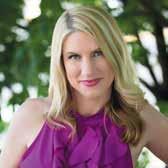



Don't miss interviews and lifestyle tips for reducing stress.



Scan the QR code to JOIN US LIVE ONL INE as these top women in wellness share their expert insights for reducing stress and achieving WELLthier Living!
 Trevor Cates, ND Stress Impact on Skin
Jaclyn Chasse, ND Stress and Fertility
Carol Penn, DO Aging Gracefully
Carrie Jones, MD, FAAP Stress and your Thyroid
Jaquel Patterson, ND, IFMCP Sleep, Cortisol and its Relation to Stress
Anna Cabeca DO, OBGYN,FACOG Stress and Libido
Arti Chandra, MD, MPH Healing Your Gut
Anne Marie Fine, ND Cracking the Beauty Code
Kela Smith, PhD DNM Stress & Fertility
Jyl Steinbeck Women’s Health & Homeopathy
Trevor Cates, ND Stress Impact on Skin
Jaclyn Chasse, ND Stress and Fertility
Carol Penn, DO Aging Gracefully
Carrie Jones, MD, FAAP Stress and your Thyroid
Jaquel Patterson, ND, IFMCP Sleep, Cortisol and its Relation to Stress
Anna Cabeca DO, OBGYN,FACOG Stress and Libido
Arti Chandra, MD, MPH Healing Your Gut
Anne Marie Fine, ND Cracking the Beauty Code
Kela Smith, PhD DNM Stress & Fertility
Jyl Steinbeck Women’s Health & Homeopathy


